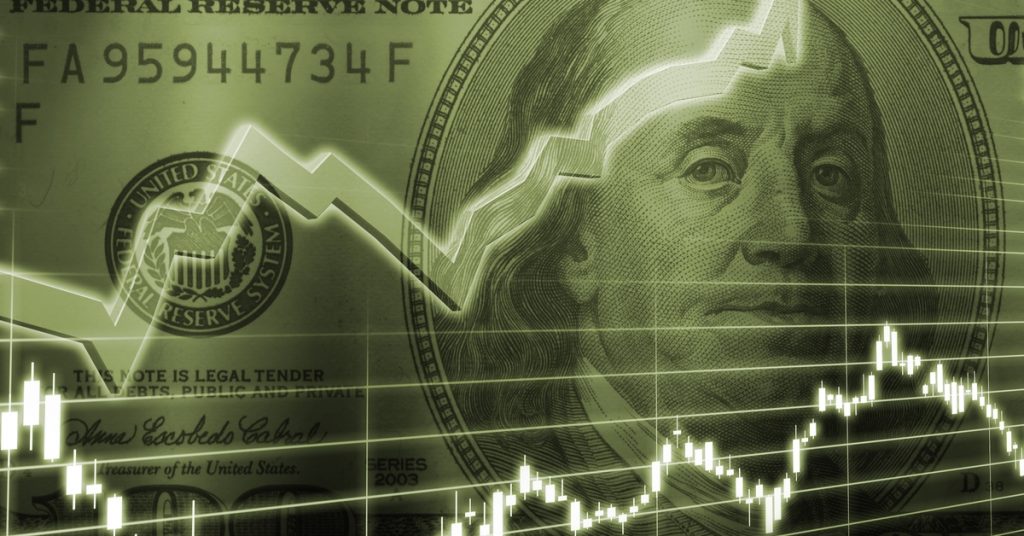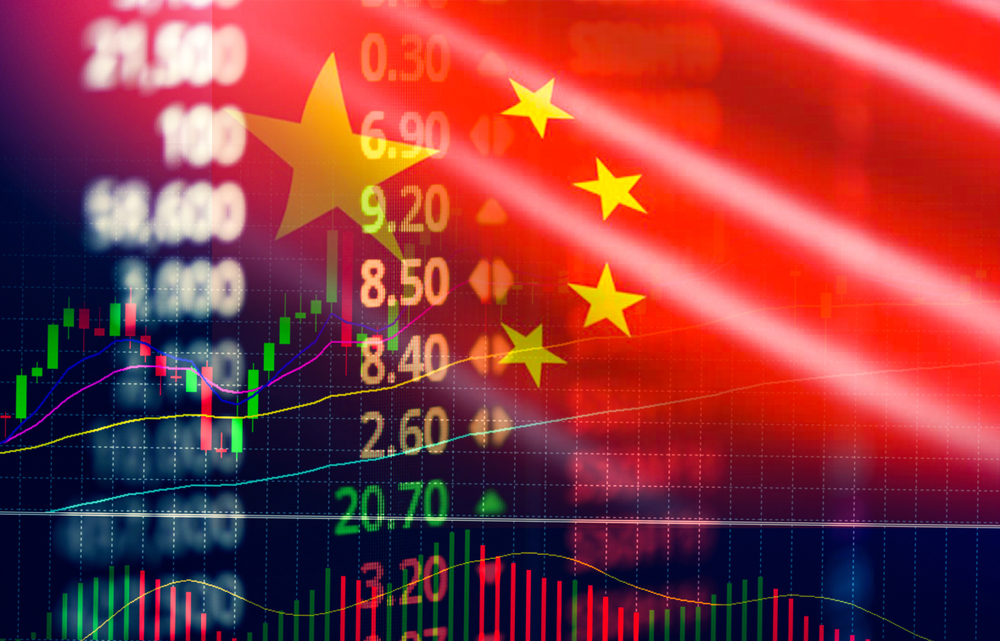
Quarterly Outlook: Inflation: What is it good for?
Quarterly Outlook: Inflation: What is it good for?
There are two kinds of people in the market: those who remember what inflation looks like -and those who don’t.
Inflation dominated investment discussions in the first quarter of 2021, and for good reason. It is the only real factor that can deter central banks from pumping the financial markets with cash and disrupt a 12-year old monetary regime which has seen global equity and bond prices reach historical highs, as investment risk was suppressed. Since 2008, the US Federal Reserve alone has expanded its balance sheet by $7tn. That is equivalent to 66% of GDP each year. In total, more than $16tn have been added to the global economy, or 20% of a year’s global output. In theory, money printed in excess of GDP growth should be inflationary. It does little to the economy since the increase in money is accompanied by a commensurate rise in prices. However, in the observed absence of inflation, this money became real wealth, making up for the shortfall in demand after the Global Financial Crisis, at least as far as the financial economy (stocks, bonds, and other risk assets) is concerned.
Inflation, in its most taxing form, has been absent for more than 20 years, except for a couple of periods where such a rise proved transitory. If long term inflation returned, central banks would need to drastically change their tactics, and the current financial paradigm would be upended. Managers of risk assets who have been ‘Pavlovianly’ conditioned to depend on central banks would probably see a massive rerating of their holdings. With the entire system of risk assets restructured and reorganised before seeking a new modus operandi.
During this quarter, supply side inflationary pressures became all too obvious. As the global economy desynchronised, due to differentiated local responses to Covid-19, value chains suffered. Restocking cycles were disrupted and so too was production. China’s restart of its economy in the second half of last year, after strict lockdowns, caused a surge in demand for raw materials. As the western world entered renewed lockdowns, while China was ramping up production, the world further decoupled. This caused a surge in input prices evident in various Purchase Manager Index reports as well as producer price indices. In early February, markets began to price in the probability of higher inflation. The long end of yield curves (where inflation lives) rose, while the short end (affected more by interest rates) remained at the same levels.
However, at this point we have to say that rising inflation expectations are mostly a US phenomenon. This is due to the fact that the US is projected to vastly outspend the rest of the world in terms of fiscal easing. While there may be technical factors behind the rise in market “expectations” (the difference in yield between an inflation-linked and its nominal equivalent bond), including increased demand by the Fed for inflation protected securities, there is also solid economic reasoning. The narrative goes: authorities are willing to risk an overheating the economy rather than risk a post-pandemic slump which could further hurt already sluggish economic growth.
The US’s projected $3tn infrastructure project was the piece of news that launched the “inflation trade”. The US central bank was quick to endorse those hopes, changing its framework to target “average” inflation and reiterating that it would tolerate a modicum of higher inflation over a short period of time, especially if this improved growth conditions and helped it achieve its other mandate, full employment.
As a result, US 10y bond yields have risen by almost a full percentage point to 1.71%, at the time of writing, since November, and the market quickly saw the biggest yield curve steepening in the past five years.
The move was remarkable for asset allocators who, for the first time in years, appear to be able to consider the possibility of increasing their bond exposure to ensure some non-equity income for their portfolios.
The four conundrums
There are three questions we need to answer which will be very important for our portfolio positioning:
- Will long term inflation stage a comeback?
- If it does, what does this mean for a market that has become dependent on central bank accommodation?
- Will the bond yield rally continue?
- What about the debt?
Q: Will inflation stage a comeback?
A: It largely depends on the age of the person you ask.
Inflation can be categorised in three distinct eras. In the 70s, right after the change in monetary regime from the Gold Standard to Monetarism, US inflation peaked slightly below 15% per annum. That would mean that an average worker would need to see their compensation rise every year by 10%-15% just to maintain real income. This was an era of despair, a “lost decade” until 1984. The second era, from the mid-80s until 2008, average inflation dropped to a 5-year average of between 3.5% to 5% and only twice, very briefly, crossing the 5% threshold. This ushered an era of high growth, improving living standards and unfettered consumerism. The third era, following the Global Financial Crisis, is characterised by even lower inflation (a five-year average down to 1.5%, stubbornly below the central bank threshold of 2% and even lower global growth). This was an era of stagnation.
To remember anything about high inflation, one probably needs to have been in their twenties by 1984, and thus in their sixties now. As that generation approaches retirement, the market is quickly losing institutional memory of a key determinant of both the economy and the course of risk assets.
The second cohort, those between forty and ixty remember inflation not as a threatening macroeconomic variable, but as a flashing number on their Bloomberg terminal. This was a generation hooked on watching the US jobs number every first Friday of each month as a key indication. The higher the number of jobs, the higher the probability towards increasing interest rates and the lower the accommodation. Still, it was an era of real growth and relatively low cost of money.
The third generation, those below forty, know of inflation only from the history books. In an era of continuous monetary easing, where central bank accommodation has been the only game in town, ‘good news’ about the economy is often treated as ‘bad news’ for accommodation. Monetary easing was the only way for financial assets to grow and for the real economy to add value. This generation has known very little apart from central bank underwriting of risk (some could call this market manipulation). More importantly, for this generation this ‘new normal’ is simply the ‘normal’.
History teaches us that inflation can be absent for a long time and still stage a comeback. In the UK, the dominant financial power in the 1800s, for almost half a century, from 1852 to 1914, inflation barely rose above 5% a few times, and was very near zero until the start of the first world war. But return it did. History also teaches us that monetary regimes, those where money velocity and interest rates are not based on a fixed asset, like gold, eventually collapse every time since the Tang dynasty first used paper money in 7th century China. And when they do, inflation occurs.
‘Beware’, warns the older generation, a step away from retirement but scared from high inflation just as they were entering the market. ‘Inflation is always present, it’s only a monetary game’ says the second generation, in its prime and holding most key positions in the financial industry. ‘This time is different’, gloats the third generation, who have never experienced the invisible hand of the market but the heavier and quite more visible hand of the central banks on the scale.
The arguments for and against long term inflation are many.
The key issue focuses around fiscal easing. For the past twelve years, governments experienced fear with regards to rising debt, mostly stemming from the 2011-12 Eurozone crisis and the repercussions in peripheral Eurozone countries. While Eurozone countries are uniquely constrained in a monetary world (they can’t just devalue their currency to pay their debts), policy makers of other countries, with significantly more monetary independence didn’t dare challenge the so-called ‘Bond Vigilantes’. Instead, they relied on central banks to re-stabilise the global financial system and to foster whatever growth they could. However, Quantitative Easing stayed largely within the confines of the financial economy. Asset prices were inflated, even those of real assets like houses or commodities, but not consumer prices. As a result of the credit-fuelled boom and subsequent crash in their balance sheets after 2008, consumers restrained their purchases, ushering in a 12-year period known as ‘secular stagnation’. This is what is known in economics as the ‘paradox of thrift’. The more one saves, the worst it is for the economy, as it is spending that drives business investment. Less spending by consumers means less hiring, lower wages and overall, less business expansion. Twelve years of Quantitative Easing failed to move the consumer inflation needle materially. Fiscal initiatives were muted, and Quantitative Easing helped push up the savings rate (which also includes pension money).
The difference this time around is that fiscal easing not only augments the potency of monetary easing, but it results in actions which more directly target consumers. From cheques sent straight in the mail, to infrastructure projects in the US, to the super-deduction in the UK, incentives to spend and invest are the largest they have been in almost a generation. In other words, monetary easing creates conditions for growth, but it is fiscal easing that can spur the consumer into using the extra money. Nevertheless, the question remains: will it be enough to generate long term inflation above the 2%-2.5% threshold which would put central bankers on alert?
Our basic thesis follows that of the Federal Reserve: we don’t believe so.
Milton Friedman famously said that “inflation is always and everywhere a monetary phenomenon”. With all due respect to the Nobel Laureate, he was dead wrong. Like most economists of the time, he assumed that extra money would mean extra demand for goods and services. Since his time, three other Nobel Laureates (Shiller, Kahneman and Thaler) proved with their work that consumers don’t think in the linear terms economic theory wants them too, and that they may regularly overestimate or underestimate risks. The decade preceding the pandemic made that point. The world went into the pandemic crisis with a cohort of consumers too timid to overspend on their credit cards or buy a house they might not afford if another crisis erupted. There was little demand for consumer credit and little supply as well, as banks, the primary creator of credit money, found themselves in a much stricter regulatory regime than in the previous years. One of the more surprising findings from the pandemic is that banks were reluctant to risk lending money to consumers and troubled businesses, even if the government picked up most of the tab. We simply don’t have enough evidence to credibly claim that conditions (pessimistic consumers, low credit expansion) will change in a way that is meaningful for companies to invest more post the pandemic.
It is not just central banks that believe inflation to be transitory. Companies, which have experienced higher input prices are not passing on these increases to the consumer and prefer to reduce their margins rather than risk losing market share.
Having said that, we can’t overlook the opinion of a generation that has actually seen inflation. The truth of the matter is that we have little insight as to how consumers will react after a life-changing yearlong lockdown. So, while we believe there’s a solid case for inflation to disappoint on the downside, we are willing to leave ample room to the opposite side of the argument.
Which brings us to the second question, and the one less pertinent to economists and more relevant to asset allocators.
Q: If inflation does indeed come back, what does this mean for a market that has become dependent on central bank accommodation?
A: Repeat after me: the Central Bank is your friend.
From an investment standpoint, it is entirely possible that the inflation debate may prove to be a red herring. Let us assume that governments, encouraged by low rates and assured that central banks will help, risk higher fiscal deficits. As a result, long term inflation will defy expectations and stage an impressive comeback. Is that something to fear? What will it look like and what repercussions will it have for money managers?
First of all, for any sort of long-term inflation to stage a comeback, bar a commodity or monetary shock like in the 70’s, consumer demand would need to drive it. The gift of globalisation was that competition on a global scale ensures that supply-driven inflation won’t be able to last for long. Even if trade wars reduce trade mobility, global supply chains have become too sophisticated over the past decades to allow slacks in production and distribution which would drive prices up permanently. So, a British car manufacturer might have problems procuring parts from Europe, due to Brexit, but they wouldn’t allow such a thing to force them out of business. They would source the parts from somewhere else, even at a higher cost, and over time they would find a way to compete again for a good profit which would entail not allowing their prices to rise materially. Even companies with significant pricing power are often reluctant to raise prices too high, for fear of encouraging competition.
Higher demand for goods, to the point that supply can’t keep up resulting in higher end prices, would be welcome news for businesses, stakeholders, and shareholders alike. Wages would have to go up, which is why the Federal Reserve focuses a lot on consumer expenditures and average compensation, as opposed to the traditional CPI basket. People would live better. CEOs would finally spend their cash to expand organically, creating even more jobs and improve the pay of their current staff. They would also be able to increase dividends on an absolute basis, and still leave a lot of retained earnings to expand. Employees, consumers themselves, could feel more comfortable taking a few more risks, by buying a slightly more expensive car or a house.
That we should be afraid of such an outcome in and of itself is ludicrous. Everything may be in flux, but one constant throughout history across continents and civilisations has been the relentless human “pursuit of happiness”. If Capitalism were afraid of thriving businesses and happy consumers then capitalism would inescapably be consigned to the same history bin as Soviet communism or any other system that put its own needs of survival above those of the people it purports to serve. Thankfully, it is not.
Thus, the lesson from the last twelve years is not that we should espouse monetarism as religion, afraid that one day it will prove to be a false God. It is rather much simpler: In a monetary world, the power lies to those with the printing presses. Mayer Amschel Rothschild has often been misattributed with this anonymous aphorism, ‘Permit me to issue and control the money of a nation, and I care not who makes its laws!’ Central Banks have been proven to be very powerful and very adaptive. Rational investors would follow them even if they changed direction, sooner than fight them.
Our base case view is that any inflation will not throw the current paradigm. Not the paradigm where central banks pump money into financial assets to foster high returns, but the paradigm where central banks foster the best conditions they can towards avoiding market panics.
We share the markets’ concerns that the return of long-term inflation could upend the current paradigm. However, we have learned to trust central banks post-2008. While one cannot avoid a massive re-rating of risk assets in that scenario, one also should not predetermine that this will happen in a disorderly fashion. i.e. it is difficult to fathom that one day central bankers would just decide to surprise all of the investment world and suddenly tighten monetary conditions, without ample pre-warning and communication for portfolio managers to adjust. In fact, we feel that due to the large debt overhang, surprises would probably not even be in their playbook, unless they are faced with true runaway inflation, usually a result of massive currency depreciation, a rarity especially for owners of global reserve currencies like the US Dollar, British Sterling and the Euro.
There’s no way to tell when this financial cycle, that has lasted over 13 years, will finally break. But when it does, we feel that the system is more fortified than in 2008 to withstand systemic losses which would exacerbate the fall. The re-rating could very well happen quickly and a new regime, based on fundamental consumer demand would probably be a lot more robust and dependable than the current one which has led to a decade inequality exacerbation and commensurate political tensions across the globe.
However, this scenario has a caveat. There’s no such thing as global inflation. Inflation is a very local phenomenon.
Increased consumer appetite is inextricably linked with enough fiscal easing to change the ‘secular stagnation’ motif, along with concomitant tolerance for high debt to pay for the stimulation. In essence it assumes that governments will borrow large sums of money to invest in future growth. Assuming that borrowing costs remain low and fiscal targeting is successful; this would still leave the world with a problem: not every country is willing to go down that road.
The US has seen its yield curve steepen precisely because markets believe it will pay a lot to stimulate its economy. Thus, it may experience both high growth and high inflation. The UK presented a generous budget now and a promise for higher taxation down the road (which may or may not be fulfilled) and is also down the same, albeit slightly more conservative, fiscal path. It is natural, after all, as fiscal spending might not hurt demand for the world’s major reserve currency, the USD, but it could cause significant pressures on GBP. The EU on the other hand has shown no intention to take that path. It remains fiscally conservative at its core as countries are constrained from incurring large deficits for too long. The constitutional court in Germany is still debating the legitimacy of the €750bn Recovery Fund some of which is to be funded with mutualised debt.
In this world, the US would experience high growth and relatively high inflation, the UK slightly less on both and the EU would decouple, hoping the American consumer would also increase demand for its goods and services as opposed to local offerings. In this world central banks would have less common ground for cooperation and tensions between governments could re-emerge.
Q: Will bond yields continue to rise?
A: It is possible, within limitations.
At the time of writing the US 10-year bond was trading at 1.71%, in a small sideways range for two weeks. Evidence shows that the market still hasn’t seen massive influx of capital.
We believe that at this range bonds are still too expensive versus equities to make a difference within the context of a diversified portfolio. The MSCI World’s Dividend Yield is at 2% and the MSCI World’s Earnings Yield (Earnings/Price) is at 3%. Currently, fund managers have very low allocations towards cash, which means that for bond yields to see inflows, it would need to be between the 2-3% range. Thus, above 2% bonds start becoming interesting and near 3% they would start to become attractive and offer pension funds and other income-seeking vehicle a good risk-free yield. Various manager surveys also corroborate these levels. We feel, however, that the global appetite for yield is so large that demand would soon bring yields down again. Also, we should note that credit spreads (the difference between a sovereign and a similar maturity corporate bond) are persistently low, which means that corporate exposure offers only slightly better returns than sovereign.
Thus, our view on the matter is simple and in line with consensus: We feel that lack of free cash and unattractive valuations versus equities could allow the bond selloff to continue for a little while. After all, there are still $14tn worth of global bonds still in negative yield territory.
However, much of the market also believes that inflation will eventually underwhelm, which is why the selloff seems to have paused at current levels.
We would not add to our allocation at the current yield levels and would consider expanding our bond holdings only if the US 10-year yield found itself sustainably within the 2-3% range.
Q. What about the debt?
A. What about it?
We devoted our last quarterly of 2019 (link), “Ghosts of Japan”, to the subject of debt. In the absence of a ground-breaking technological innovation or another breakthrough which would improve productivity, inflation-driven growth will come from debt. According to the institute of International Finance and Axios, global Debt to GDP as at the end of 2020 jumped to a record 356% ($281b), up from 322% just a year ago.
The IMF estimates US government debt to GDP at 127% and 134% by 2026. For the UK, projections are for 103% and 113% respectively.
Theory suggests that over 90% of debt to GDP, debt becomes a drag on growth. However, this framework by Carmen Reinhart and Kenneth Rogoff has specific limitations. The most important is interest payments. From 2000 to 2011, US average interest payments on its debt topped 3% as a percentage of GDP. The number fell to slightly above 2.5% after the Global Financial Crisis crashed interest rates. The OECD now projects interest payments at 1.17% of GDP, despite a 20% climb in debt. In other words, governments can sustain more debt for now, because they are not paying too much for it.
Higher inflation would bring about higher rates when that debt was to be refinanced. However, at the same time it would reduce the nominal cost of debt. In fact, in a high debt situation, inflation is a welcome development.
Fear over high debt stems from lack of trust in monetarism and the power of reserve currencies. In theory, a country can print as much money as it wants to pay off its debt, at the price the relative value of its currency. However, in theory, if all major countries and owners of reserve currencies print more money simultaneously to finance government spending, then currency valuations should maintain the balance between them.
The winners would be currencies outside this arrangement (countries which haven’t borrowed and printed as much), and real assets (real estate, gold etc). But also, the states that borrowed, assuming they managed to invest wisely and rekindled consumer demand.
In this writer’s humble opinion investors should learn to be comfortable with more “fluid” notions of money, and the fundamental idea that the creation of money can equal the creation of wealth. Inflation is an inaccurate and unpredictable arbiter of how much wealth central banks can create.
The state of the global economy and global risk assets
A divergent recovery
2021 is projected to be the year of recovery. It is also projected to be a year of economic divergence. The global economy is at a turning point with Covid-19 continuing to be the primary driver of economic activity. G7 countries, the most important economies bar China and those most hit by the pandemic, are also leading the recovery. As of 6 April 2021, the UK had vaccinated roughly 46% of population with at least one dose. The US is swiftly catching up with 32%. The EU is lagging significantly with 13% on average.
The IMF has upgraded its outlook, expecting the global economy to grow by 6% in 2021 and 4.4% next year. However, economic divergence is set to persist, with long-lasting output gaps and considerable slack in major economies. We believe that the recovery will be out of sync, and uneven in shape. We expect a swift initial recovery as lockdowns are lifted, and thereafter a slow, bumpy return to (a modicum of) normality. That normality’s most important aspect is ‘desynchronisation’. Lacking central coordination, economies, from a national to a local level, adopted different responses towards the pandemic. Currently, vast stimulus is masking disconnects. We feel that when the stimulus is lifted, it will reveal that the global economy is, on many levels, out of sync. Nations have de-synced with each other, towns between them and sectors as well, with manufacturing suffering less than services, but also featuring less rebound potential.
Due to its massive stimulus programme, the US is expected to grow by 6.4% in 2021 and 3.5% in 2022. The UK is expected to see the recovery carried into the next year, with growth rates of 5.3% and 5.1% respectively. The EU, which has followed a considerably more conservative fiscal approach is expected to follow with only 4.4% growth this year and 3.8% in the next. Overall, emerging economies are expected to see a rebound in their output by 6.7% in 2021 and 5% in 2022.
Normality not restored yet. As vaccination rates progress, economies are already planning to reopen. However, due to (not entirely unexpected) impediments in the rollout, especially in Europe, we don’t see a return to a 90-95% of ‘normal’ economic activity until later in 2021. Already, economists are changing their projections for a 2021 recovery, spilling into 2022.
For the time being, manufacturing is outperforming services. We expect the situation to reverse when economies exit their lockdowns. Manufacturing (20-30% of GDP in developed economies) is currently holding up better than services (70-80% of activity), especially due to a bout of global re-stocking of inventories. However, over the long term we expect services, primarily driven by a rebound in domestic consumption (50-70% of GDP), to recover quicker as manufacturing will have to grapple with damaged and out-of-sync supply chains.
Once lockdowns are exited, the key driver of global economic activity will be extended fiscal and monetary stimulus, which is widely expected to outlive the pandemic. We expect these extraordinary measures to be withdrawn only after governments and central banks are comfortable that the recovery has sufficient impetus. This means generous budget giveaways and low tolerance for financial risk until the recovery is well under way and the scars of the pandemic have sufficiently healed, and maybe even extended towards a time when long term inflation will be considered to have made a realistic comeback.
The state of the British Economy
Vaccination rates suggest that the UK will the first G7 country to turn the corner, closely followed by the US. British economic and business sentiment is at its highest levels in seven years. However, as two thirds of British trade happens with Europe, and the continent is lagging the recovery by more than two months, British economic recovery will probably be mostly limited to the rebound in internal consumption.
Forward-looking PMI data suggest that the rebound in manufacturing is gaining momentum, on the back of strong new orders and restocking in preparation for the loosening in lockdown restrictions. However, disruptions in supply chains remain a significant constraint on economic activity. Overall employment conditions remain benign, with unemployment near 5%, only slightly up from the 3.8% pre-pandemic level. Having said that, we would expect it to grow once the furlough schemes are withdrawn, with the most pessimistic estimates assuming as much as 4m more unemployed, i.e. headline unemployment around 13%. In this uncertain environment the Bank of England remains very accommodative assuming, much like the US Federal Reserve, that any bout of inflation will be temporary.
Additionally, Brexit is causing notable trade friction. Exports of UK goods to the EU fell 40.7% in January from the preceding month while imports from Europe fell by 28.8%. As the lockdown regime hasn’t differentiated much on a monthly basis, it is logical to assume that Brexit-related trade friction, as well as excessive stocking prior to the Brexit deadline on 1 January may be the primary culprit for reduced activity. Over the shorter term we would expect Brexit to be an impediment to the economic rebound.
The real game-changer could very well be fiscal stimulus. In 2019, the UK borrowed £55bn on a net basis. In 2020, the figure was close to £300bn. Despite the rebound, the government decided to borrow another £230bn, at least, in 2021 in order to shore up the economy post the pandemic, but also to help key sectors restructure post-Brexit. The bold goals set out in the budget (decentralisation, capital expenditure) could certainly help towards the goal of making the necessary changes to the British economy after Brexit. The budget suggested that fiscal stimulus is set to be withdrawn near the latter part of the year, and possibly not until 2022, although we wouldn’t be too surprised to see heightened government spending protracted beyond that period.
Asset Allocation
The Investment Committee decided to make no headline asset allocation changes, as we saw little value in adding to our bond positions at current valuations. The changes made this quarter are in line with moving towards our new Strategic Asset Allocation We also intend to shift some weight towards value to better balance our value-growth exposure. We remain slightly overweight equities and risk, in the belief that even a central bank-guided market can still deliver returns. In terms of geographical allocation, we remain overweight to the UK which we feel is still sitting at a significant discount to other markets. Our underweight in fixed income continues as a result of structurally low yields. In relation to Sterling, we keep close to the benchmark. We maintain a healthy exposure to gold, as the asset class remains uncorrelated with equity markets and would tend to gain in times of aggressive monetary accommodation. In terms of alternatives, we maintain exposure to infrastructure, which we believe might be a beneficiary of increased fiscal spending in the next few years.


Beyond the Middle East and Yields: How the Wealth Management Industry navigates turmoil
Since September, there have been two issues dominating markets: high yields and geopolitics. In the past few weeks, both have been exhausted.

Long-term yields come with risks
Last week added two key pieces of information: A robust (ish) US labour market, and a flare-up of tensions in the Middle East. Both of these are important to portfolio holders, especially those with a large allocation in bonds, especially long-dated bonds.

The world remains lopsided: What this means for asset allocation
This inflation cycle is nearing its completion. In the US, core Personal Consumption Expenditure, the Fed’s favourite inflation gauge, fell below 4% for the first time since June 2021.

How long is “Higher for Longer”?
A consistent element of this rate hike cycle has been the differential between market optimism and Fed intentions. Since early 2022, markets were never really convinced about how far the Fed was willing to take things. Expectations have consistently fallen short of reality in terms of rate hikes.

From Stagflation to Goldilocks, portfolio managers start thinking small
Going into the final stretch of the year, the one thing we can tell with any level of certainty is that we now know even less than we did going into it.

Capitalism 101: Watch the Fed, Buy the Dips
“Sell in May and go away”, the old traders say. This is not because markets fall in the summer. It is because volumes are low and signals are not trustworthy. In September traders return, and the month is usually the second worst for stocks.

Irrational consumption can only last so long
The world’s eyes were set on the Fed’s annual symposium last week. Thousands of analysts stood at the ready to dissect even the tiniest morsel of new information.

Stop acting like you haven’t seen positive real yields before
In the past few weeks, bond yields, especially at the longer end of the curve have been rising.

A central bank’s balancing act
The latest 25bps rate hike by the Bank of England takes the base rate to 5.25%. Interest rates in the UK haven’t reached these levels since March 2008 – the depths of the Global Financial Crisis.

The recession that never came
The Bank of Japan captured most of the headlines last week, quite rightfully, as they began to unwind a decade of ultra-loose monetary policy.

Quarterly Investment Outlook: The Age of Policy Divergence
Despite higher interest rates and persistent (though falling) inflation, global equity markets continued to err on the side of optimism as consumer spending remained strong and company earnings were better than expected.

The Three Things Note: Policy is not uncertain. Traders are.
Alexander the Great was the first of the world’s great conquerors. Originally intent to exact revenge from Persia (modern-day Iran), he turned his adventure into global conquest and exploration. He marched his Greeks from Macedonia to modern-day Turkey, Georgia, Armenia, Syria, Lebanon, Israel, Jordan, Egypt, then back up to Iraq, finally conquering modern-day Iran.

Sticky inflation = sticky rates= volatility
Sticky inflation means sticky rates. And sticky rates mean market volatility as well as financial and policy divergence. In this world, money managers should remain sanguine about risk and recognise that their best friends in the past decade, central bankers, are not there anymore.

The Bank of England should be worried about Russia
I consider myself a fairly open-minded person when it comes to investments. For the better part of two decades, I only had one absolute rule: “Don’t take active bets in Japan, it will just make you look bad”. As of yesterday, I added a second axiom: “Never write your weekly early when Russia is involved”.

Monthly Market Update: This isn’t a bull market
As markets celebrate Congress’s decision not to self-immolate, investors should reflect on how low the bar for rational behaviour by policymakers is, and whether risk premiums reflect the present political and geopolitical tectonic shifts. Despite the recent stock market rallies, which is really a one sector story, technology and AI, risks remain high.

To hike or not to hike. That is definitively NOT the question.
This week, the FOMC will decide whether it will hike interest rates once more, or whether it will pause. Traders and investors, who are faced with the dilemma of whether the Fed will hike or not, face, pretty much, the same situation as Hamlet: A false dilemma.

The year that homework will pay off
The debt ceiling drama-that-wasn’t is squarely behind us. An eleventh-hour deal was signed, averting the wanton default of the biggest economy in the world, and the global risk-free asset, the US Dollar, marking the 79th straight time that the debt ceiling was successfully raised.

Monthly Market Update: Investing money at a time of volatility
Our key theme since the beginning of the year is that the world is a volatile and unpredictable place. To be fair, this could have been our theme every year since 2006 and we would have still hit the mark. But this is not garden-variety volatility.

A US debt default could happen. What then?
The inevitable US debt ceiling drama is upon us. With the earnings season now mostly behind us, the eyes of investors will inevitably turn towards Washington DC. Investor surveys suggest that this is now the larger risk in financial markets.

Should stocks be so darn happy?
The collapse of SVB and Credit Suisse seemed to be one of those watershed moments where it became clear that tightening conditions were claiming their first victims: problematic banks. Yet a month after that episode, global equities are near their highest levels in over a year. Should stocks be so darn happy?

Investing Money at a time of Volatility
This is not garden variety volatility. Underlying everything are two themes. A big geopolitical shift away from the post-soviet unipolar world, and the war against all that is not sustainable.

The mini-Banking Crisis is (mostly) over. That’s no reason to relax
In my nearly 20 years in investments there’s one rule that seems to work under any circumstance: Warren Buffet’s “Only when the tide goes out do you discover who's been swimming naked.”

How central banks finally pivoted
Last week, the ECB hiked twice, defiant of the Credit Suisse debacle. In her initial speech, Christine Lagarde focused solely on inflation, not acknowledging rising financial risks.

Quarterly UK Outlook: Q2 2023
The global economy remains unbalanced as the pandemic disrupts global trade, supply chains and international relations. As a result, individual economies diverge and data is unpredictable and volatile.

Monthly Market Update: Volatility and hope
If investors collectively believe in the second coming of QE, then at some point, we should expect a severe market retrenchment. But what if markets are more sanguine than that? What will be the major catalyst, to unleash market forces for risk assets to escape their narrow bands?

SVB is not a Lehman moment, and probably won’t become one.
One of the things that puzzled us in the past few weeks, was that despite the sharp rate hikes, the Fed hadn’t broken anything.

Want a way back to economic and political sanity? Look at Britain.
Volatility. The end of the macroeconomic “Great Moderation”. This was our theme entering 2023. We are already seeing data that is volatile, and contradictive.

Sticky growth or a Wiley E. Consumer Moment?
Before children’s cartoons turned philosophical, opting to promote role-modelling and self-actualisation, they were mostly about slapstick comedy and serious self, or otherwise-inflicted, injury.

The Next Five Bull Markets
If investors collectively believe in the second coming of QE, then at some point, we should expect a severe market retrenchment. But what if markets are more sanguine than that? What will be the major catalyst, to unleash market forces for risk assets to escape their narrow bands?

Monthly Market Update: The good place
One of the key risks we persistently flagged in the second part of last year has been the swiftly rising risks in the bond market. Bond risks are not like equities. They are not linear, which means that they can escalate very quickly.

How ChatGPT will change the world -and financial advice? #writtenbyahuman
Markets didn’t move much last week. However, one event stood out. Google’s stock lost 10%, nearly $100 Billion in market cap, after it’s Bard AI made an error.

Are bulls headed towards the cliff? We aren’t so sure.
Equity and bond markets continue to rally, with the FTSE 100 hitting all-time highs last week. However, the economic realities of last week are in antithesis with this bull market. In the past fifteen days, the Fed raised rates into a cooling economy and warned markets that it will continue to do so in the coming months.

The risk of a financial accident is being removed
One of the key risks we persistently flagged in the second part of last year has been the swiftly rising risks in the bond market. Bond risks are not like equities. They are not linear, which means that they can escalate very quickly.

Expert Sinologists Needed
Fund managers consider an inflation resurgence as 2023’s biggest risk. This is the known unknown. Higher inflation would force central banks to maintain tight conditions, even as we are heading for an economic downturn.

Inflation is improving. We’re still not fighting the Fed
Despite the Fed’s persistently hawkish rhetoric, since the last quarter of 2022, markets have embraced a more positive narrative, mostly on the back of increasingly benign US inflation numbers. Last week’s reading further reinforced the positive narrative, sending the S&P 500 one point shy of 4000 and bond yields lower.

Quarterly Investment Newsletter: Winter 2022
The last quarter of the year saw some relief for investors who had been hit from all sides throughout 2022 as markets rallied on the belief that the economy was perhaps showing enough signs of stress to persuade central banks to consider slowing, and then stopping interest rate rises.

Opportunities need swift entry and a lot of patience
Outlooks, our own included, paint quite a grim economic picture at the start of the year. Inflation is really an independent variable and, even if the rate of price rises moderates, prices themselves are set to remain high. Meanwhile, central banks are determined to put the brakes on economic growth in a bid to prevent inflation from becoming entrenched.

Stability should never be seen as the ‘normal’ state of things
Stability should never be seen as the ‘normal’ state of things. And that’s well and truly better for truly long-term investors.

A positive message for 2023: The world is rebooting, and that’s good
It is an uncomfortable message that we end the year with, yet a necessary one. Stability should never be seen as the ‘normal’ state of things. And that’s well and truly better for truly long-term investors.

Monthly Market Update: A pandemic that changed the world
Even if we recognise that the world has profoundly changed, we try to analyse it with the eyes of the past. Instead of trying to forecast with the past’s eyes, we need to acknowledge how the present has changed, and develop the right tools to analyse the future properly.

Three Predictions for 2023 – and what they mean for your portfolio
The confluence of a global cost-of-living crisis causing the end to a decade-long economic and financial paradigm, simmering geopolitical tensions, Chinese economic convulsions and US political ones is creating a world with increasingly uncertain outcomes. So how is one to predict anything about the next year?

The Outlook 2023: The world we have
Outlooks. The time-honoured financial industry tradition of toiling to write 30-40 pages of annual forecasts promptly binned by April- at the very latest. Yet, the industry gods demand it and deliver we must.

Difficult decisions and difficult truths
It’s bad news for our ‘pivoting’ camp, a word that in the past few months has been grossly and infuriatingly overused. Not only is the Fed speeding up the rate of Quantitative Tightening, but it is also showing no signs that it is ready to change its aggressive tightening policy.

Monthly Market Update: 2023 will not be like 2022
The British Autumn drama entered its third act, and the worst seems behind us. The UK has what may pass for an equivalent to the Euro-crisis technocratic governments in Italy and Greece. That particular playbook would, at this point, see market volatility ebb. Having said that, the play usually hides an unsurprising fourth act.

What will the Pivot look like?
If there’s anything we know in this profession, it is the people’s yearning for certainty in an uncertain world. Yet, speaking with some authority on the matter, we have never really seen what certainty looks like. If anything, we have learned to fear those who are ‘100%’ sure of anything.
Christmas… in October?
The British Autumn drama entered its third act, and the worst seems behind us. The UK has what may pass for an equivalent to the Euro-crisis technocratic governments in Italy and Greece. That particular playbook would, at this point, see market volatility ebb. Indeed the UK’s 30Y bond is now almost at the same place […]

The three things that matter: 10 Downing Street is not among them
In history, the lie that is most often told is that of iconic leaders, who won simply because of the merits of their personalities. Henry V won in Agincourt because he was smarter than the French. So did Elizabeth I when the Spanish Armada invaded. All of them brave and unique, to be sure. But also lucky.

The clash between fiscal and monetary policy
How is it that within the space of a few weeks Kwasi Kwarteng was as unceremoniously sacked as Greek Gianis Varoufakis in 2015, and Liz Truss’s position is as, if not more, precarious than Silvio Berlusconi’s in 2012? The answer is really not that surprising: It’s Quantitative Tightening meeting political moral hazard.

Monthly Market Update: Bad news is becoming good news. And that is good.
Quantitative easing is the ultimate tool to pacify markets. Once it was applied with success, it became very difficult for policymakers to consider other options to restore market calm. They can stop QE, and even reverse it for a while, but the moment markets become too wobbly, they will not hesitate to deploy it.

Quarterly Investment Newsletter: Autumn 2022
The third quarter of the year saw markets start to second guess central banks’ resolve to raise interest rates in order to combat inflation. Expectations of a change in monetary policy gathered momentum and caused a rally in global equities of over +11% in a five week period. Alas this proved to be a short- lived bear market rally as central banks, led by the US Federal Reserve, signalled their determination to stay the course with rate rises.

How to invest in an unbalanced world
The global financial system is trying to cope with a series of exogenous shocks increasing in magnitude using internal tools. So far this has not been working. The shocks keep coming in and markets remain very volatile. Last week, OPEC+ announced a surprise decision to reduce oil production by 2m barrels per day.

‘Bad news’ is on its way to becoming ‘Good news’ again
Quantitative easing is the ultimate tool to pacify markets. Once it was applied with success, it became very difficult for policymakers to consider other options to restore market calm. They can stop QE, and even reverse it for a while, but the moment markets become too wobbly, they will not hesitate to deploy it.

The Price of Action
UK financial markets were rocked last week by UK Chancellor of the Exchequer Kwasi Kwarteng’s mini budget, which promised a slew of tax cuts in a bid to stimulate economic growth.

Monthly Market Update: The real risk
Investors worry about equity volatility. However this is, by and large, transient. Instead, we should all be cognisant that we are in a paradigm shift. If growth falters and inflation doesn’t break, the central banks’ mandate and independence may be up for review.

Enter the fall
Last week saw the further retrenchment of the S&P 500 below the 4000-point mark as markets continued to digest more hawkish comments by the Fed. Meanwhile, the US 10y bond is back above 3.1% as the sell-off was wide.

It’s not the equity volatility that worries us. It’s what comes after.
A lot can happen in eight minutes. You can boil an egg. You can read eight pages of a novel. You can brew a coffee. Apparently, you can also wipe $78 billion out of existence.

Paradigm Shift Deferred, For Now
The S&P 500 has rebounded 15% from its lows and is now close to 10% from its highs. This movement is difficult to reconcile with a looming recession, slower earnings, especially for Big Tech, an energy crunch in Europe, wobbly real estate markets and a China still in obvious trouble.

The thing about bear market rallies
In the past four weeks, the S&P 500 has quietly rallied 15% and is now 10% shy of its all-time highs. For the most part, this is due to the market’s belief that US inflation is at or near its peak and should begin to come down going forward. A slightly better-than-expected earnings season is helpful too.

Actions Speak Louder Than Words
Both of the UK’s Conservative Party’s leadership hopefuls have campaigned on the soundness of their economic policies although they would do well to remember that actions speak louder than words.

Pavlov’s dogs aren’t good at investing
If, a year ago, anyone suggested that the US Federal Reserve, the world’s de facto central bank, would produce a triple rate hike, and that this rate hike would be celebrated with a 5% rally in equities, they would probably be laughed out of the room.

Monthly Market Update: Have we seen the worst of it?
At the end of June our Investment Committee convened to decide the asset allocation for the third quarter. There were no changes to asset allocation, however some duration has been restored to the fixed income allocation. We continue to hold a neutral position in equities, an underweight position in fixed income and an overweight position in alternatives.

Quarterly Investment Outlook: Paradigm Shift
We find ourselves in the midst of a once-in-a-decade paradigm shift for financial markets and the global economy. The first six months of the year have seen the worst equity performance in nearly a century. Already, average portfolio performance is the worst in twenty years, on par with the 2008 global financial crisis.

It’s still ‘Whatever it takes’. It just sounds different now
Last week, the ECB ended years of negative rates with a bold 50bps hike. Then, the bank introduced the Transmission Protection Instrument (TPI). This tool will allow the ECB to purchase bonds of countries where spreads have risen significantly. TPI solves the ‘how do you raise rates without endangering Italy’ conundrum.

The turmoil of political volatility
Politics are always messy. Often unfair and sometimes even undemocratic. But for long term investors, what matters is not the stability of politics, but the stability of underlying policy decision making. Are institutions robust enough to withstand political volatility? For the time being they are. But make no mistake. Protracted political convulsions will eventually erode major capitalist institutions.

Quarterly Investment Newsletter: Summer 2022
Having been absent for decades, the return of inflation is forcing market analysts to learn how to respond to rising interest rates and squeezes on the real purchasing power of consumers’ disposable income. As interest rates rise, the notion of ‘There Is No Alternative’ is diluted, and the prospects for a slowing economy increase, leaving valuations on risk assets vulnerable despite the recent falls.

The Great Deflation of 2023
Last week featured more volatility, with the world’s leading indices anchoring at bear-market levels in anticipation of new sharp rate hikes by the Fed. Yet, we feel that markets might once again be missing the forest for the trees.

The abandonment of perpetual QE: economic pressure points
Equities rebounded somewhat at the back end of last week in what was mostly a relief rally. Far from being considered a full recovery, last week illustrates how high market volatility is and how fragile sentiment remains.

Quelling inflation: The Fed’s sole objective
Markets have sustained significant losses in the past few days, as a result of persisting inflation driving interest rates sharply higher and undermining growth. Global stocks are now 22% and global investment-grade bonds 19.6% below their December highs. Volatility is significant.

Monthly Market Update: The GDR (Great Dose of Reality) crisis – Part II
Ostensibly, everything about the latest rally in equity markets screams “Bear Market rally”. After all, how can we call an end to the Bear Market when Quantitative Tightening, the great process to unwind some of the Fed’s recent purchases, hasn’t even begun?

What do you do when the ‘only game in town’ is a bad one?
Markets crashed at the back end of last week, as US inflation surprised again on the upside, registering a new cycle-high. The S&P 500 is back below 4000 points, as investors are pricing in a more aggressive policy stance.

Hawkish central banks and the Fed Put amid a world of rising costs
It may come as a surprise, but financial markets are less interested in interest rates (which take a lot of time to feed into the real economy, especially from such low levels), and more about two other factors: Quantitative Tightening (QT) and the Fed Put.

Stocks Rise following Release of Federal Reserve Minutes
Last week we saw the best equity performance since November 2020, after the Fed’s Minutes suggested that they will not be more aggressive than already anticipated. Ostensibly, everything in this move screams “Bear Market rally”.

The seesaw effect: falling equities amid ever-rising inflation
The strict definition of a 'Bear Market' is one where an index has dropped more than 20% from its high point. In an age of algo-driven volatility, which amplifies upward and downward movements, it's probably safe to discard that definition.

Federal Reserve remains ‘the only game in town’
On Thursday, US equities experienced one of their worst days in the last two years. The global equity benchmark S&P 500 index lost 3.56% and the Dow Jones shed around 1000 points, a number which usually makes headlines.

Turbulent waters may signal a wave of defaults on the horizon
On the 23rd March 2020, the United Kingdom entered its first official lockdown in an attempt to limit the spread of the COVID-19 virus. The initial uncertainty was catastrophic for the economy and many UK businesses were forced to cease trading as revenues plummeted to zero almost overnight.

Weekly Market Update: Another hawkish signal from the Federal Reserve
Last week, global equities once again came under pressure, falling -0.9%, as the Federal Reserve raised the possibility of several 50 basis point interest rate hikes over the coming months in an attempt to tackle rampant inflation and cool robust demand.

Weekly Market Update: UK Growth slows as inflation Surges
Equities did not stray far from their initial levels this week in GBP terms, as markets closed a day early in observance of Good Friday. US equities initially rose following the release of inflation numbers, as core inflation was lower than expected, but fell -0.7% over the week as oil prices rebounded.

Quarterly Investment Outlook: Is Globalisation Going in Reverse?
Globalisation is not inherently “good” or “bad”. It is the natural historic evolution of the nation-state, made possible by the internet and the potency of capitalism. But is it over?

Quarterly Investment Newsletter: Spring 2022
The new year brought about a significant change of market sentiment as concerns about inflation and fundamental changes to monetary policy caused a reassessment of asset prices. The war in Ukraine has added to inflationary pressures particularly in commodity markets, as further disruption is expected in supply chains as China announces further lockdowns.

Monthly Market Update: Remaining invested, even in the face of a recession
It takes a confluence rather than individual risks to cause catastrophe, as any veteran of the Global Financial Crisis will attest. We believe that there’s a mounting probability that we are seeing such a confluence of risks now, one that could significantly hurt growth:

Weekly Market Update: The return of quantitative tightening
Last week was mixed for equities as the Federal Reserve announced preparations for a new round of quantitative tightening (QT) in order to reign in the significant expansion of the Fed’s balance sheet over the course of the pandemic. Global stocks fell -0.9%, as the healthcare & energy sectors outperformed, whilst technology was the main laggard.

Is China facing an economic slowdown?
China was the first country to successfully emerge from the initial Covid-19 wave. People were back to the office in 2020 itself, infection rates plummeted and as a result economic growth was stellar, beating all expectations. China emerged as the winner at a time when most western countries were still coming to terms with the […]

Weekly Market Update: Risk-on sentiment in markets despite weakening fundamentals
It takes a confluence rather than individual risks to cause catastrophe, as any veteran of the Global Financial Crisis will attest. We believe that there’s a mounting probability that we are seeing such a confluence of risks now, one that could significantly hurt growth:

Weekly Market Update: Stocks rise as central banks hike
Stocks rallied globally last week, as investors saw falling oil prices and possible negotiations between Russia and Ukraine as reasons for optimism. US stocks appeared unfazed by the Federal Reserve’s decision to raise interest rates by 0.25%, rising +5% over the week, while 10 Treasury yields rose by 15.8 bps.

Monthly Market Update: Cancelling Russia isn’t cheap
Cancelling a person, right or wrong, is no small feat, and there are repercussions. “House of Cards” was a series that literally made Netflix, yet it features much less prominently after Kevin Spacey’s cancellation. The cancelled actor/celebrity will have worked with other people, who will now see their incomes reduced as works of art are withdrawn and themselves smeared by association.

Weekly Market Update: A week for inflation and commodities
Last week, markets were whipsawed by further escalation and uncertainty surrounding the invasion of Ukraine, as well as US inflation figures, now comfortably situated at levels not seen since the early 1980s. US stocks fell -1.5%, whilst European markets posted significant gains of +4.0%, recouping some of the considerable losses over the last month. UK equities continued the trend of relative outperformance last week, posting gains of +2.8%. However, both emerging market and Japanese stocks fell -3.7% and -3.1% respectively. While risk-off sentiment in markets is often accompanied by a flock to safety into government bonds, this was not observed last week as yields rose. The US 10Y rose 26.1 bps, finishing the week at 1.992%. The German 10Y Bund also recorded similar outflows, with yields rising 31.8 bps to 0.249%. In the commodities space, news that the London Metals Exchange (LME) cancelled trades as a short squeeze forced the price of nickel to skyrocket unsettled traders and investors alike. Metals returned +0.9% in GBP terms whilst gold continued to perform well, up +2.3% on the week.

Ukraine risks reignite uncertainty over ECB policy
2012 was a year for the financial history books. Europe’s greatest experiment, the common currency area, was moribund after only twelve years of life. The post-Lehman economic convulsions had driven Greece, its weakest economy, bankrupt, and had brought Italy, its most indebted economy, to its knees. Mario Draghi, then Chair of the ECB, and the […]

Weekly Market Update: A high-risk future filled with uncertainty
The fallout from the invasion of Ukraine continued to rock markets last week, as the attack on the Zaporizhzhia nuclear plant gained widespread media attention and represented a further escalation of the conflict. Most major indices posted losses last week, although geographical location significantly influenced price action. US stocks remained relatively stable, down -0.1%, whilst European markets suffered losses of -9.1% on concerns over rising energy prices and the potential for further supply chain disruption. The risk-off sentiment and subsequent flock to safety by investors saw bond yields fall. The US 10Y fell 23.1 bps, finishing the week at 1.731%. The German 10Y Bund recorded similar inflows as the yield crossed back into negative territory, finishing the week at -0.069%. Russia’s role in the global economy as exporter of many commodities has encouraged sharp price rises. Oil rose a staggering +26.4% to $125.5 per barrel, whilst metals returned +12.0% in GBP terms. Gold also performed well, up 5.5% on the week. The US Dollar also benefitted from the safety trade and performed well relative to the Euro and Sterling.

Weekly Market Update: US inflation data and Ukraine tensions unsettle markets
Equity markets were rocked last week, as inflation in the US surged past estimates to 7.5%, causing yet more problems for the Federal Reserve in their attempts to combat inflation without triggering a market shock. To further add to economic uncertainty, the White House also signalled that an imminent invasion of Ukraine by Russia was becoming increasingly likely, triggering a sell-off in US equities on Friday afternoon. The build-up of Russian troops on the Ukrainian border has caused many NATO member countries great concern, with UK nationals now being advised to evacuate Ukraine immediately. US equities finished the week down -2.3% in Sterling terms, whilst Europe did not have the chance to catch up with Friday’s price

Inflation momentum will recede. But prices may remain elevated.
There’s a strong possibility we may see the end of the episode soon. But supply chains could take long to mend and overall price levels could remain elevated versus pre-pandemic numbers.
Weekly Market Update: Volatility spikes on hawkish remarks from the Federal Reserve
Market Update Global stocks continued their fall throughout a volatile week, with most regions again falling significantly. However a rally in US stocks late on Friday, on the back of strong earnings in Apple (which rose 7%), saw US equities finish the week up +0.8% in US Dollar terms and +2.1% in Sterling terms. Other […]

It’s the worst start in 20 years. Here’s why investors should feel fine.
The worst start to the year inn 20 years leaves investors confused. Here's why we are more relaxed about it.

Weekly Market Update: Mixed economic data contributes to market volatility
Market Update It was a volatile week for global equities as investors were presented with a mixed array of economic data. US and EU stocks fell -0.8% and -1.5% respectively, while heavy exposure to the energy sector continued to favour UK equity markets which gained +0.8%. Emerging market stocks posted a rebound after a prolonged […]

Quarterly Outlook: Sustainomics and a world without QE
2022 is the year where QE (conceivably) ends, and a decade-long Sustainability theme begins. Read our annual outlook.

Quarterly Investment Newsletter: Winter 2022
In no surprise to anyone, Covid-19 remained at the epicentre of all matters economic, and the emergence of the highly transmissible Omicron variant forced governments and public health officials to reassess the speed at which normal daily life can resume.

Weekly Market Update: Stocks retreat as bond yields advance
Market Update Equities broadly retreated during the first week of 2022, as the minutes of the Federal Reserve meeting and Friday’s US jobs report both raised market expectations for interest rate hikes by the Federal Reserve. US and EU stocks suffered losses led by falls in the technology sector, whilst UK stocks fared well due […]

China’s property sector woes
China’s Evergrande Group has rapidly become Beijing's biggest corporate threat as it wrestles with debts of more than $300 billion as a result of years of aggressive expansion. But that was just the tip of the iceberg.

Weekly Market Update: 2022 could be volatile
Market Update Equities in major markets retreated last week as tightening central banks and the prospect of further coronavirus restrictions due to the Omicron variant gave rise to renewed volatility. US, UK and EU stocks slipped following the decisions of the Federal Reserve to taper at a faster rate than expected, the Bank of England […]

Well-managed risks in a quickly evolving economic environment
The global economy is entering another difficult phase which features a broad range of emerging and evolving risks. The persistence of the pandemic has disrupted the way business is conducted across the globe, in some ways permanently. The economic impact for developed countries has been somewhat mitigated by emergency fiscal stimulus. However, the debt burdens […]

Monthly Market Update: It’s not inflation that will ‘transition’. It’s everything else.
The Omicron variant was not much of a surprise. We have already seen many mutations of Covid-19. But a hawkish Fed? We haven’t experienced one since 2018. As the potential of a new outbreak emerges, Fed Chair Jay Powell surprised markets by insisting that the US central bank would accelerate asset purchase tapering in December. Instead of customarily intoning the ‘Fed Put’, as per usual in times of crisis, Mr. Powell added fuel to the fire, causing unusual, for December, equity volatility.

Investing in a world without QE
Inflation rising may upend a 12-year investment paradigm. Is there life after Quantitative Easing?

Weekly Market Update: Easing omicron worries help stocks rebound
Market Update Equities in major markets rebounded last week, as fears over the impact of the Omicron variant of Covid-19 appeared to subside due to the news that booster vaccine shots may be effective against the new strain. Many indices returned to, or exceeded, levels seen before the initial news of the Omicron variant triggered […]

Weekly Market Update: Stocks slide after US jobs report sends mixed signals on the economy
Market Update Equities in major markets saw mixed returns in the past week, with global stocks down -0.7% after a volatile week of trading. US stocks were down -0.5% over concerns that the Federal Reserve could taper its asset purchases at a faster rate and that the Omicron variant may hamper the economic recovery. European […]

It’s not inflation that will transition. It’s everything else.
A new, more transmissible variant, and a surprisingly hawkish Fed brought some of the most volatile trading days in months.

COP26 – a recap and what it means for investors
COP26 officially concluded on November 14th, ending two weeks of negotiations. What do the announcements mean for investors?

Weekly Market Update: A game of variants
Equities in most major markets posted large losses last week with global stocks down -1.8% in Sterling terms, driven by a sharp sell off on Friday after news that the new omicron coronavirus variant could be extremely contagious. US stocks were down -1.3% despite positive economic data being published earlier in the week, with weekly jobless claims hitting their lowest level since 1969. European stocks were down -3.8%, as certain countries continued to impose restrictions to curb rising Covid-19 cases. UK stocks were down -2.4%, while emerging market equities fell by -2.7%. The US 10Y Treasury yield was down 7.3bps finishing the week at 1.473%, while the UK 10Y yield was down 5.4bps reaching 0.825%. In US Dollar terms gold fell -1.3%, perhaps surprisingly given the perception it is a defensive asset, while oil was heavily down -10.2% to $68 per barrel.

A Game of Variants: 5 questions answered
The course of the pandemic in 2022 is not expected to be linear. By and large the pandemic continues to determine economic output and supply chain cohesion. An even more transmissible variant, even if completely covered by current vaccines, could materially increase pressures on consumers, businesses and supply chains.

European Canaries Sighing
As the new german government is being installed, European risk indicators are on the rise. Are markets preparing to challenge the Euro's new status quo?

Weekly Market Update: Inflationary pressures may be moderating. Supply chain pressures aren’t.
Equities in most major markets posted losses last week with global stocks down -0.4% in Sterling terms, as inflation concerns, supply chain issues and rising coronavirus cases dampened investor sentiment. US stocks were up +0.1% with growth stocks exhibiting solid gains, outweighing the losses in more cyclical firms. European stocks were down -1.8%, as countries within the region started imposing restrictions to curb rising Covid-19 cases. UK stocks were down -1.6% amid CPI inflation figures hitting a ten-year high, while EM equities fell by -1.7%. The US 10Y Treasury yield was down 2.2bps finishing the week at 1.548%, while the UK 10Y yield was down 3.5bps reaching 0.880%. In US Dollar terms gold lost some of its previous weeks’ gains, down -1.3%, while oil was heavily down -6.2% to $76 per barrel.

Weekly Market Update: Operations Managers are the new economists
Equities in most major markets posted minor gains last week with global stocks up +0.3% in Sterling terms, as inflation concerns seem to have stemmed a previously strong investor sentiment. US stocks were up +0.2% as multi-year high inflation data offset positive news on employment data. EU stocks were up +0.2%, despite Covid-19 cases surging in most countries in the region. UK stocks were up +0.7% while EM equities rose by +2.2%, driven by China’s announcement that it would propose easing measures to aid indebted real estate firms. The US 10Y Treasury yield was up 11.0bps finishing the week at 1.561%, while the UK 10Y yield was up 6.9bps reaching 0.914%. In US Dollar terms gold posted solid gains for the second week in a row, up +3.1%, while oil was down -0.1% to $80.4 per barrel.

Monthly Market Update: From Pandemic-nomics to Sustain-omics: The Return of Big State
What do the British budget and COP 26 have in common? The -possibly inevitable- return of ‘Big State’. The 1980s ushered in an era of lower taxes and reliance on consumers to fuel growth. The Covid-19 pandemic, twelve years after the global financial crisis, followed by at least a decade of ‘Sustainability Economics’ may put […]

Weekly Market Update: Was it a good idea for the BoE to surprise markets? Probably not.
Equities in most major markets posted gains last week with global stocks up +3.3% in Sterling terms, amid continued strong investor sentiment. US stocks were up +2.0% on the back of positive earnings surprises, a dovish Fed meeting and strong employment data. EU stocks were up +3.2%, with the ECB insisting that rates will stay low for the near future. UK stocks were up +1.0% as the BoE unexpectedly kept interest rates unchanged, which caused Sterling to fall -1.4% against the US Dollar. Globally, consumer discretionary and IT were the best performing sectors while financials and healthcare were the worst performing. The US 10Y Treasury yield was down 10.6bps finishing the week at 1.455%, while the UK 10Y yield was down 19.0bps reaching 0.845%. In US Dollar terms gold was up +3.4%, while oil was down -1.3% to $81.2 per barrel.

Weekly Market Update: From pandemic to Sustain-omics: The end of liberal capitalism?
Equities in most major markets posted gains last week with global stocks up +1.4% in Sterling terms, amid stronger investor sentiment. US stocks were up +2.0% as positive earnings surprises continued during the busiest week of the earnings season. EU stocks were up +1.2% amid strong corporate earnings, while UK stocks were up +0.5% as the OBR revised its outlook for the UK economy upwards. Globally, consumer discretionary and IT were the best performing sectors while financials and energy were the worst performing. The US 10Y Treasury yield was down 8bps finishing the week at 1.552%, while the UK 10Y yield was down 11.1bps reaching 1.034%. Sterling was down -0.5% against the US Dollar. In US Dollar terms gold was up +0.1%, while oil was down -0.6% to $84.2 per barrel.

Weekly Market Update: Santa rally, or not, we remain equal weight
Equities in most major markets posted gains last week with global stocks up +1.4% in Sterling terms, amid stronger investor sentiment. US stocks were up +1.7% as positive earnings surprises continued for a second week in a row. EU stocks were up +1.2% despite heightened concerns that a rate hike could come sooner than expected, while UK stocks were down -0.4% as the latest inflation readings remained above the BoE’s 2% target. Globally, most sectors posted gains with healthcare and utilities being the best performing, while materials and telecoms underperformed. The US 10Y Treasury yield was up 6.2bps finishing the week at 1.632%, while the UK 10Y yield was up 3.9bps reaching 1.145%. Sterling remained flat against the US Dollar. In US Dollar terms gold was up +1.4%, while oil was up +2.9% reaching $84 per barrel.

Quarterly Investment Newsletter: Autumn 2021
This quarter we consider the UK’s rising inflation and gas prices, look at how the shortage of workers is adding to inflationary pressures, and review the funds we use to invest in US Small Cap stocks.

Quarterly Update: Will the Post-Covid Labour Market ever be the same?
'Work' may never be the same after the pandemic. How might things play out? What do businesses need to know to prepare? Read our quarterly economic update

Monthly Market Update: Policy Challenges
Seen from a bird’s eye view, the Fed has turned more hawkish in preparation to taper asset purchases. As a result, markets are now more prone to respond with volatility to rising risks, of which there’s no shortage: From soaring natural gas prices to impaired supply chains threatening consumers and businesses; from a new status […]

Weekly Market Update: Look it’s China
Equities in most major markets posted gains last week with global stocks up +1.1% in Sterling terms, amid some improved economic figures. US stocks were up +0.8% as the earnings season kicked off strongly with major banks beating earnings expectations. EU stocks were up +1.6% despite a contraction in the industrial sector while UK stocks were up +2.0% amid strong macroeconomic data showing output growth during August. Globally, almost all sectors posted gains with cyclicals outperforming relatively versus more defensive stocks. The US 10Y Treasury yield was up 3.8bps finishing the week at 1.574%, while the UK 10Y yield was up 5.6bps reaching 1.105%. Sterling rose by +1.0% against the US Dollar. In USD terms gold pulled back by -0.4%, while oil was up by +2.5% reaching $82 per barrel.

Weekly Market Update: Port congestion isn’t dealt with interest rate hikes
Equities in most major markets edged higher last week, partly offsetting the previous week’s losses, with global stocks up +0.3% in GBP terms. US stocks were up +0.4% despite the disappointing jobs report published on Friday. European stocks were up +0.2% amid high volatility while UK stocks were up +1.0% despite the BoE’s new Chief Economist raising the alarms on inflation’s persistence in the coming months. Globally, energy stocks outperformed all sectors for a fifth week in a row, posting solid gains of +4.9%, followed by financials, utilities and materials. The US 10Y Treasury yield was up 15.0bps, finishing the week at 1.612%, while the UK 10Y yield was up 15.6bps reaching 1.158%. Sterling rose by +0.5% against the US Dollar. In USD terms gold pulled back by -0.6%, while oil was up by +4.1%, reaching $81 per barrel.

Weekly Market Update: Reducing to equal weight
Equities in most major markets pulled back amid inflation worries, persistent supply side issues and more contractionary anticipated monetary policy - global stocks were down -1.6% in GBP terms. US stocks were down -1.2% as uncertainty loomed around the federal debt ceiling and the approval of the USD 1 trillion infrastructure bill. EU stocks were down -1.2% amid higher than expected inflation while UK stocks were down -0.3% despite an upward revision of latest GDP figures. Globally, Energy stocks continued their upward trend for another week in a row posting solid gains of +4.9%, with the rest of the sectors pulling back. The US 10Y Treasury yield was up 1.2bps finishing the week at 1.465%, while the UK 10Y yield was up 8.2bps reaching 1.00%. Sterling fell by -1.0% against the USD. In USD terms gold rose by +1.6%, while oil was up by +3.5%.

Fight the Fed… when it’s hawkish (and a few words about Germany)
Stock indices in most developed market regions rebounded strongly after Monday’s acute sell off amid fears of Evergrande’s default - global stocks were up +0.7% in GBP terms. EU stocks were up +1.7% despite business activity losing steam, while US stocks rose +1.0% after recording their biggest daily drop since May 12th, on Monday. UK stocks rose by +1.0% as the BoE announced that rates will be unchanged; however holding a more hawkish stance. Globally, Energy stocks continued their upward trend posting solid gains of +4.0% followed by financials, IT and consumer discretionary. The US 10Y Treasury yield was up 8.9bps finishing the week at 1.453%, while the UK 10Y yield was up 7.4bps reaching 0.922%. Sterling fell by -0.4% and -0.3% against the USD and the Euro respectively. In US Dollar terms gold rose by +0.2%, while oil was up by +3.4%.

The UK’s energy market and its broader implications
Much of the recent news in the UK has been devoted to the spike in household energy costs and the potential collapse of the number of providers in that market from around 50 to 10 by the end of winter. In fact, since writing this first draft of this piece 2 providers have gone bust, leaving more than 800,000 customers without a provider. Of itself this is an interesting topic: it seems remarkable that rising wholesale gas prices can rupture the UK energy market and reduce the number of energy providers by 80%. For us the more relevant question relates to the wider economy and how energy costs can impact consumer demand and inflation, which contributes to our discussions when deciding asset allocation. This blog post aims to explore the former and explain the Mazars Investment Team thinking on the latter.

Weekly Market Update: China’s ‘LTCM moment’ may be the least of its problems, and ours.
Global stocks were relatively unchanged in Sterling terms (down -0.7% in USD terms) last week amid investors’ skepticism around supply chain issues hampering growth, elevated valuations and future monetary policy. Japanese stocks posted gains for a consecutive week, rising by +1.1%, as campaigning began for the next president of Japan’s ruling LDP. UK stocks fell by -0.9% amid higher than expected inflation, while US stocks were up +0.2% driven by a strengthened US Dollar. Globally, all sectors exhibited losses apart from energy stocks which posted solid gains of +2.8%. The US 10Y Treasury yield was up 2.1bps finishing the week at 1.363%, while the UK 10Y yield was up 8.9bps reaching 0.848%. Sterling fell against the US Dollar by -0.7% and remained flat against the Euro. In US Dollar terms gold lost -1.2%, while oil was up by +4.0%.

Monthly Market Update: Can the Fed be the answer to everything?
For a long time our central theme has been the disconnect between the real and the financial economy. Nowhere has this disconnect been mademore clear than in the Fed’s communication in August. The bullish economic outlook clashed directly with a dovish approach on interest rates.Actions speak louder than words, however, and it is becoming apparent […]

Weekly market update: How much longer can liquidity mask reality?
Global stocks were down -1.1% in Sterling terms last week amid fears of momentum fading and growth concerns due to the persistence of supply chain issues. Japanese stocks were the only region to post gains, rising by +3.8% in Sterling terms, buoyed by news of prime minister Suga stepping down and expectations of further stimulus. UK, US and European equities were all down -1.5% driven by inflation concerns and uncertainty about the economic outlook. Globally, all sectors exhibited losses apart from consumer discretionary. The US 10Y Treasury yields were up 1.7bps, finishing the week at 1.343%. German 10Y Bund yields were up +2.6bps to -0.332% after the ECB announced it would reduce the pace of its pandemic asset purchasing programme. Sterling fell against the US Dollar by -0.2% and rose by +0.4% vs the Euro. In US Dollar terms gold lost -2.1%, while oil was up by +0.7%.

Weekly market update: The Fed is not the answer to everything!
US, UK and European equities were relatively unchanged in Sterling terms last week, faring -0.1%, +0.1% and -0.1% respectively, amid concerns that the rate of global growth could start decelerating. Japanese equities were up +4.0% despite the resignation of Prime Minister Yoshihide Suga, while emerging market equities were up +2.7%, positive for a second week in a row after the Chinese tech sector had fallen significantly in previous weeks. Globally, stocks were up +0.3%, with energy and financials being the only sectors exhibiting losses. The US 10Y Treasury yield was down -1.5bps finishing the week at 1.322%. The German 10Y Bund yield was up +6.2bps amid higher than expected inflation in the euro area. Sterling was up +0.8% against the US Dollar and unchanged relative to the Euro. In US Dollar terms gold lost -0.1%, while oil prices rose slightly by +0.1%.
Weekly Market Update: markets take a step back
Market Update US equities ended the week on a positive note, but the omnipresent uncertainties of the Delta variant, Fed tapering, and geopolitical issues put the other major indexes in the red for the week. Emerging market equities were down -2.9% as China’s continued regulatory crackdown on big businesses, mainly the technology sector, remained a […]

Weekly Market Update: equities continue their rally, yields end the week lower
Market Update Global equities rallied again last week, however this time it was Japanese equities leading the way, up +2.1% in Sterling terms, having lagged behind in recent weeks. UK and European equities were also up +1.7%, with US equities gaining +0.8%. The only region to fall was emerging markets, down -0.8% in Sterling terms. […]

You can relax. The Fed has no intention to fight inflation (yet).
With inflation pressures coming mostly from the supply side, there is little the Fed can do to curb it. Interest rates are tools best used to cool down the economy during a mature, credit-driven economic boom. They are not designed for a recovering economy and much less for one still under the threat of a pandemic.

Weekly Market Update: US equities near all time highs as earning beat expectations
Market Update Global equities rallied last week, with US equities leading the way, up +1.4% in Sterling terms, boosted by 87% of US firms beating earnings expectations. European equities were up a similar amount in local terms, however up only +0.4% in Sterling terms. UK equities were up +0.2%, however Japanese equities fell -1.3%. With […]

Weekly Market Update: developed market stock indices modestly retreat from previous week’s highs
Market Update Developed markets were off slightly over the course of the week. US technology companies registered a new high during the week as Microsoft and Alphabet recorded strong Q2 earnings, but Amazon’s miss on revenues pulled the technology index down slightly on Friday. In the US and abroad the rise of the delta variant […]

Weekly Market Update: stocks rebound on strong quarterly earnings
Market Update Following a tumultuous start to the week, global equities rallied to finish in positive territory. The decision by OPEC+ to increase production contributed to markets selling-off on the Monday, with energy the worst performing sector for the week, while most other sectors recovered to finish up or almost flat. In particular telecoms, IT […]

Weekly Market Update: stocks retreat from previous highs
Market Update Global equities fell -0.3% last week in Sterling terms, with a stark dispersion in returns. UK equities fell the most, down -1.6%, with US and European equities falling -0.4% and -0.3% respectively. Energy stocks were the worst performing globally, with financials also weak, both of which contributed to the UK’s underperformance. However Japanese […]

Quarterly Outlook: An investor’s inflation and growth playbook
Investing during the past twelve years has been underpinned by a basic principle: market participants have been encouraged to take risks, mainly to offset the trust shock that came with the 2008 financial crisis (GFC). Each time equity prices have fallen significantly, the Federal Reserve, the world’s de facto central bank, would suggest an increase in money printing, or actually go ahead with it if volatility persisted. Bond prices, meanwhile, kept going up, as central banks and pension funds were all too happy to relieve private investors of their bond holdings even at negative yields. Market risk was all but underwritten.

Monthly Market Update: The crystal ball is blurry
Visibility about the future is as low as it has ever been. In recent memory it is difficult to recall a market and economic environment with such low degree of consensus amongst investors and business leaders. Even as vaccination is bringing the world closer to the end of the pandemic, uncertainty is everywhere to be […]

Weekly Market Update: a mixed week for markets
Market Update In a week where global equities fell -0.1%, European stocks were flat and UK stocks rose +0.1%, we shouldn’t be deceived by the apparent calm. Global equities were shaken on Thursday due to concerns about slowing global growth and this caused a sharp sell off across developed markets. However, on Friday the realisation […]

Weekly Market Update: major U.S. stock indices post record highs, bond yields pull back
Market Update Global yields fell last week on concerns about the spread of the delta variant and its possible effect on the ability of economies to recover from the pandemic. US 10Y yields fell 10bps to 1.424%, with UK and German 10Y yields also falling 7.5 and 8bps respectively. The result for global stocks was […]

UK stocks are cheap: is this an opportunity or a threat?
Global stocks have rallied hard since the crunch following the Covid-19 outbreak in Europe. However, UK investors noticed that their portfolios were following at a slower pace, even after the UK became the quickest vaccinated country amongst the G7. Since February 2020 the MSCI World, the global equity benchmark, has risen 27% in Sterling while […]

Shariah Investing: the growth of the Islamic Finance gives private clients more options than ever before
This article is the first in a series about Islamic investing Most investment advisers have encountered investors looking for Shariah compliant portfolios at some point. My own experience has previously been one of frustration as the universe of investable funds did not offer enough options to be able to construct portfolios which satisfied clients’ risk […]

Weekly Market Update: Markets rise as Powell reiterates patient approach
Market Update Global equities rebounded last week after a period of weak performance. US equities led the way in Sterling terms, up +2.1%. UK, European and emerging market equities gained +1.8%, +1.1% and +0.8% respectively. Although up in local terms, weak Yen performance saw Japanese equities fall -0.3% in Sterling terms. US equities are now […]

Weekly Market Update: sentiment wobbles amid risk of the Fed raising rates
Market Update Global equity markets fell last week in local terms, selling-off on hawkish comments from the Federal Open Markets Committee that suggested two interest rate hikes in 2023. Further hawkish comments from FOMC members, including the possibility of a tapering of asset purchases, were also seen as contributing to weak equity performance. What was […]

Weekly Market Update: Stocks Shrug Off Higher Inflation
Market Update Global markets were again positive for the week, although with global yields falling markedly, it was the growth and bond-proxy sectors which were positive, with healthcare and IT the standout gainers. Meanwhile cyclical stocks, which have seen upturned performance since the positive vaccine news in November, had a poor week. Financials, materials and […]

The latest position of the ECB
Christine Lagarde, President of the ECB, gave a press conference on 10 June following a meeting of the ECB’s governing council. Her speech contained some unequivocally positive observations about the European economy, lamenting a bounce back in services activity, continued strong manufacturing activity and improving consumer spending, all against a backdrop of strong global demand. […]

Monthly Market Blueprint: The return of big state
I remember when liberal capitalism failed. The night of Friday 12 September 2008 no one was particularly worried. Barclays would rescue Lehman Brothers, like Bear Stearns was saved before it. On Monday morning we got the news. A Wall Street icon was the first victim of a year-long credit crunch. If one giant can fall, […]

Weekly Market Update: Markets Provide Contrasting Inflation Signals
Market Update It was a steadily positive week for equity markets last week, with all major regions gaining in Sterling terms. Emerging markets equities were the strongest performing, up +1.8%, while Yen strength saw Japanese equities returning +1.2%. Energy was the strongest performing sector globally, as oil prices reached their highest level in two years. […]

Royal Dutch asked to come out of its environmental Shell
Yesterday was a big day for the oil and gas sector as one of its biggest players, Royal Dutch Shell, received the verdict on a landmark hearing to speed up its cuts to greenhouse gas emissions. In the world of responsible investments, this was a historic development. A panel of judges in a lower court […]

Weekly Market Update: Markets Grapple With Eventual Tapering of Asset Purchases
In a relatively volatile week of equity market trading, ultimately most major equity markets ended nearly unchanged. Following on from US inflation last week, there was increased focus on the UK and EU readings this week, with investors looking for any evidence of a potential shift in monetary policy. US equities fell most of major equity markets for British investors, down -0.7% in Sterling terms, although more modestly in local currency terms. UK equities ended a mixed week down -0.2% as the effects of stronger than anticipated labour market data and inflation played out. Emerging markets and Japanese equities saw a role reversal last week as they moved from laggards to leading markets, with emerging market equities providing the best returns to Sterling investors up +1.4% on the week. European equities rose +0.6% in Sterling terms. The US 10Y yield fell -0.7bps to 1.6%, while the UK 10Y fell -2.7bps to 0.8%. In commodity markets, gold rose +1.7%, while oil fell -2.9% to $64.1 a barrell.

Weekly Market Update: US Inflation Unnerves Equity Markets
Global economies are reopening, and moving into the recovery phase, this pickup in activity has lead investors to question the potential impact on inflation. Investors are cautious of whether inflationary effects will be transitory or long-lasting. The US inflation reading unnerved markets and all major equity markets fell last week. US equities fell -2.2% in Sterling terms, partly driven by currency effects, markets had sold off sharply at the start of the week before recovering in the latter half. UK equities, which typically move inversely to Sterling, due to high levels of overseas earnings, fell -1.2%. Japanese equities fared worst last week, caught in global equity volatility and increased lockdowns, falling -4.0% last week. Despite strong Chinese equity performance, emerging market equities fell -3.8% in Sterling terms. The US 10Y yield rose 5.1bps to 1.6%, while the UK 10Y rose 8.2bps to 0.9%. Both gold and oil were nearly unchanged, falling -0.2% and -0.1% on the week respectively.

Monthly Market Blueprint: A fiscal game changer
April saw a de-escalation of bond yields and a further rise in stock market prices across the board. Risk assets began to gear up for the acute phase of the economic rebound, as vaccinations progress in most G7 countries, especially the UK and the US. Currently there are three big themes we think all investors should be watching. Find out here -

Weekly Market Update: Mixed Results in Equity Markets as Economies Reopen but US Jobs Disappoint
With many regions operating a shortened trading week, returns varied significantly across major equity markets. UK equities provided the best returns to Sterling investors, up +2.4%. The rise in UK equities was helped in part by rising commodity prices, with miners and energy firms benefiting from rising metal and oil prices. European equities provided the next best returns, up +1.7% in Sterling terms. US equities rose a modest +0.2% in Sterling terms, though up +1.3% in local currency terms, as the rotation from growth to value impacted returns. Emerging markets fell -1.0% in Sterling terms. Japanese equities rose +1.3% in Sterling terms, not quite enough to move the region into positive territory year-to-date. The US 10Y yield fell temporarily on bad jobs data, although recovered somewhat, ending down 4.9bps to 1.6%, while the UK 10Y fell 6.7bps to 0.8%. Gold rose +2.4% on the week, while oil rose a further +1.0% to $65.4.

Weekly Market Update: Consumer-Led Recovery at Close to Fastest Pace in Modern History
Once again many major equity markets finished the week not far from where they started. Market attention was squarely focused on the Federal Reserve, where chairman Jerome Powell promised not to raise rates in the near term; as a consequence, markets did not sharply react in either direction. US equities were flat in US Dollar terms, but up +0.2% in Sterling terms. UK equities were the best performing region, up +0.5% last week. European equities fell for the second consecutive week, down -0.8% in Sterling terms. Emerging markets fell -0.2% in Sterling terms. Japan was the clear laggard, where earnings failed to meet expectations and the Bank of Japan kept policy unchanged. Japanese equities fell -1.9% in Sterling terms. The US 10Y yield rose on improved economic data, up 6.8bps to 1.6%, while the UK 10Y rose 9.8bps to 0.8%. Gold fell -0.3% on the week. The better than expected economic data helped oil to rise +2.4% last week to $64.4.

Weekly Market Update: Indian Covid Crisis Captures Attention of Markets
Equity markets ended the week largely unchanged, with the largest movements seen in Japanese and UK stocks. UK equities fell -1.1%, driven in part by a falling oil price, as the global economic outlook increasingly uncertain, with clear inequality in the vaccination progress between regions, dampening expected demand for oil. US equities fell -0.3% in Sterling terms, with plans to raise capital gains tax only making a slight impact on US markets. European equities rose +0.2% in Sterling terms due to currency effects, having fallen -0.4% in local currency terms. Emerging markets were the only risers in local currency terms, and were up +0.1% in Sterling terms. Globally the best performing sector was healthcare, whilst energy was the worst performing. The US 10Y yield fell slightly by 2.2 bps to 1.6%, while the UK 10Y fell 2 bps to 0.7%. Gold fell -0.2% on the week. Oil fell as the economic outlook deteriorated, down -1.7% on the week to $62.1.

Monthly Market Blueprint: April 2021
Global economic divergence has caused a surge in input prices evident in various Purchase Manager Index reports as well as producer price indices. In early February markets began to price in the probability of higher inflation. The long end of the yield curves (where inflation lives) rose, while the short end (affected more by interest rates) remained at the same levels.

Quarterly Investment Newsletter: Spring 2021
Rising concerns for the prospects of inflation dominated the first quarter of 2021 and caused bond market yields to rise in both the US and the UK. As a result, US treasuries lost over -5% of their value (in Sterling terms) during the period, whilst the loss on gilts was even greater at just shy […]

Weekly Market Update: Caveat Emptor
UK equities reached the highest level in over a year as part of a broad-based rally in equities globally. Equity markets continue to benefit from increasing risk appetite as investors become increasingly bullish on a 2021 recovery. UK equities rose +1.6%, although it remains one of just a few regions not back to all time highs.US equities rose +0.7% in Sterling terms, the stronger growth moderated by Sterling rising +0.9% against the US Dollar. Globally the best performing sector was materials, whilst telecoms lagged other sectors. The US 10Y yield fell 7.9 bps to 1.6%. The UK 10Y yield was more or less unchanged, down just 1.0 bps to 0.8%. Gold rose +1.1% on the week, although it remains -7.6% so far this year. Oil rose +5.7% last week to $63.1 a barrel. Oil is up +28.5% this year. The jump in oil prices comes in spite of global coronavirus cases beginning to rise in many regions, with several European and Asian economies looking likely to increase the stringency of lockdowns.

Deliveroo’s IPO: The Key ESG Takeaways
Upon floating onto AIM on 31st March, Deliveroo saw more than £2bn wiped off its £7.6bn valuation, after its share price tumbled by more than 26% during its first day of trading. Deliveroo’s heavily touted IPO and its subsequent flop has highlighted the risks of overlooking the ‘S’ in ESG when making investment decisions. Continue reading to know more about the key ESG takeaways from Deliveroo's IPO:

Weekly Market Update: Rational Exuberance
Markets opened positively this week thanks to the impact of stronger than anticipated US payrolls data released over the bank holiday. Meanwhile, the EU vaccination campaign is finally beginning to pick up pace. US equities rose +3.4% in Sterling terms, reaching further record highs. UK equities rose +2.7% in the final week before the second phase of lockdown easing. European equities rose +3.2% in Sterling terms, supported by the increased likelihood of fiscal stimulus in the region. Emerging market equities fell in local currency terms, but gained +0.1% in Sterling terms. Globally, the best performing sector was information technology, whilst energy was the worst performing. The US 10Y treasury yield fell slightly down 6.3 bps to 1.7%, while the UK 10Y gilt yield fell 2.1 bps to 0.8%. Gold rose +1.6% last week. Oil fell for the second week, down -2.8% to $59. Oil has fallen almost -20% from its earlier surge, driven partly by a more challenging route out of the pandemic than originally forecast.

Will the rotation into value continue?
While it remains to be seen how long value leadership will last, many of the drivers that led investors to flock to growth stocks have reversed and now favour value stocks.

Weekly Market Update: Suez Canal Blockage Adds to Supply Chain Strains
Relative to the year so far, last week saw quite a heterogeneous response to news by markets. On one hand there is continued and growing positivity surrounding the opening of economies, but this has lead to some inflationary concerns. Meanwhile, the Suez Canal blockage raised concerns about supply chain disruptions. US equities rose +2.2% in Sterling terms, hitting record highs, helped by a more optimistic vaccine schedule from President Biden. UK equities rose a more modest +0.6%. Globally the best performing sectors were more defensive names such as consumer staples and utilities, whilst telecoms was once again the worst performing. Japanese equities fell -1.5%, moving back into contractionary territory this year. The US 10Y yield fell slightly, down 4.5bps to 1.7%, while the UK 10Y fell 8.1bps to 0.8%. Neither gold nor oil were much changed, both down -0.1% on the week, with oil trading just under $60 a barrel.

Weekly Market Update: The Yield, Not “Inflation” Will Determine the Rotation
Equity market gains early last week were, broadly speaking, eroded as bond yields continued to rise, reaching one-year highs. Amid falling oil prices and rising political uncertainty caused by potential bans on vaccine exports coming out of the EU, many major equity markets fell last week. US equities fell -0.5% from record highs in Sterling terms, despite the country surpassing 100 million vaccinations on Friday. UK equities fell -0.7%, now down -2.4% from their 52-week highs in January. Globally the best performing sector was healthcare, whilst energy, due to oil prices, was the worst performing. Japanese equities rose +3.6% and are the best performing major equity markets this year. The US 10Y yield continued its rise up 9.6bps to 1.7%, while the UK 10Y rose 1.6bps to 0.8%. Gold rose +1.3% on the week. Oil has seen back-to-back weekly declines, down -6.1% to $61.2 a barrel, due to a glut of supply and weakening demand forecasts.

Weekly Market Update: Stocks ended the week near all time highs
A positive week for equities saw all major equity markets close the week positive in local currency terms. With Sterling continuing its bullish start to the year this pushed EM equities down to a flat week in Sterling terms. US equities rose +2.0% in Sterling terms, hitting record highs. US equities were helped by falling bond yields, from Tuesday, which helped boost equity investor sentiment. UK equities rose +2.1%. Globally the best performing sector was consumer discretionary, whilst telecoms was the worst performing. Japanese equities rose +1.5%, erasing their losses year-to-date. The US 10Y yield continued its rise, although more modestly, up 5.9 bps to 1.6%, while the UK 10Y rose 6.6bps to 0.8%, reversing last week’s fall. Gold rose +0.8% on the week. Oil fell, after last week’s strong rise, down -1.4% on the week to $65.8. Oil is up +32.6% on the year, highlighting the extent to which vaccination programmes are increasing forecasters’ outlooks for economic activity later this year.

Monthly Market Blueprint: Inflation is not-yet-the problem
Late in 2020 equity markets climbed on the anticipation of vaccinations and are now consolidating at higher levels. They are now trading sideways, patiently waiting for economies to open and earnings to catch up to heightened valuations. In the first two months of the year, equities have gained a healthy 2.6% (though less than 1% in GBP terms). Nevertheless, for all the excitement about vaccines and the impending reopening of the global economy, investors understand the exceptional equity performance since last year and, in fact, risk asset performance in the past twelve, is primarily owed to the ability of central banks to absorb risk. Central banks have been, and continue to be, the “only game in town”. The cornerstone of their ultra-accommodative policy has been the absence of inflation, which would compel them to adhere to their mandate and tighten money supply in the real economy, to the detriment of the financial economy.

Weekly Market Update: Investors dilemma: Cheaper bonds or returning dividends?
Markets returned to positive territory this week, supported in part by progress on the Biden stimulus bill. However, chair of the Federal Reserve Jerome Powell’s speech, with a lack of updates to current policy, disappointed investors leading to a sell-off on Thursday afternoon. US equities rose +1.7% in Sterling terms. UK equities rose +2.5%, with UK equity markets benefiting from rising oil prices. Emerging Markets grew +0.9% in Sterling terms, although this was a more moderate +0.1% in local currency terms. Globally the best performing sector was Energy, whilst IT was the worst performing, as the rising yield environment impacted valuations. Japanese equities rose +1.0%. The US 10Y yield continued its rise, up 16.1 bps to 1.6%, while the UK 10Y fell 6.4bps to 0.8%. Gold fell -1.1% on the week. Oil rose sharply, up +8.4% on the week to $66.5 following the OPEC meeting where it was decided to hold production at current levels, when a rise in production had been anticipated.

Weekly Market Update: Bonds Sell Off Spills Over to Wider Market
A significant rise in US Treasury yields unsettled markets last week. US equities fell -1.9% in Sterling terms, with Tech stocks suffering their worst week in nearly six months. UK equities fell -1.9%, with Energy and Financials the only two positive sectors for the week. Emerging Markets suffered the greatest sell-off, having led global equity markets so far this year. UK and Emerging Markets are the only major equity markets still positive for the year in Sterling terms. Globally the only positive sector was Energy which was supported by rising oil prices. Investors will keep a keen eye on the OPEC+ meeting this week for any indication of increased oil supply. Japanese equities fell -2.4% in Sterling terms, the worst performing region year-to-date for UK investors. The US 10Y yield continued its rise, up 6.9 bps to 1.4%, at one point hitting 1.6%, and the UK 10Y rose 12.2 bps to 0.8%. Long-term yields are now trading at their highest level since the pandemic. Gold fell -2.3% on the week, while Oil rose +4.4% to $62.7.

Weekly Market Update: Markets Rally for Second Week as Inflation Expectations Return
Global equities continued last week’s gains, rising +0.7% in Sterling terms. UK equities, amongst the top performing major markets, rose by +1.6%. They were supported by rising oil prices and positive returns from energy companies, as the domestic market is overweight to the Energy sector. European equities, amid high volatility, were up +0.8%, due to improved coronavirus infection rates and hopes of a large U.S. economic stimulus. US equities rose +0.4%, the worst performing major region. Globally, Energy was the best performing sector whilst Utilities and Cons. Discretionary were the only sectors to finish the week down. Emerging Markets maintained their strong performance since the start of the year, posting gains of +1.5%. Sterling rose +0.8% and +0.3% against the US Dollar and Euro respectively, continuing its strengthening trend this year. The US 10Y yield rose 4.5bps to 1.2% and the UK 10Y rose 3.5bps to 0.52%. Gold fell -2.0% on the week, while Oil rose +3.7%.

Monthly Market Blueprint: The ‘Bubble’ Narrative
Is this a bubble? Is it safe to invest at such high valuations? This constitutes 90% of client questions these days, and for good reason. It seems outlandish that stock markets are sky high while the global economy is having its worst quarter since the second world war. The answer, the House View we put […]

Weekly Market Update: Improving Economic Outlook and Falling Volatility Support Equity Markets
Global equities rebounded from their sharp sell-off last week, rising +4.0% in Sterling terms. US equities were some of the best performing, rising +4.5% and more than recovering the previous week’s losses in spite of weaker than anticipated labour market data. UK equities rose +1.3%, the worst performing major region. Energy particularly struggled, in spite of rising oil prices, as UK energy giants BP posted its first annual loss in a decade, while Royal Dutch Shell profits fell 71%. European equities rose +2.8%. Emerging Market equities fared best, up +4.8%, reverting back to their trend of equity leadership in 2021. Globally, all sectors were positive with the Technology sector the strongest. Sterling rose +0.2% and +1.0% against the US Dollar and Euro respectively, continuing its strengthening trend this year. The US 10Y yield rose 9.8bps to 1.16%, while the UK 10Y rose 15.5bps to 0.38%. Gold fell -2.0% on the week, while Oil rose +8.7%.

What is the difference between a Mazars CIO and a boiling frog?
As an analyst I hate metaphors. While they are a very useful tool to turn my thorough -but often thoroughly boring- analyses into actual readable pieces, they also almost always convey a false sense of proportion. One of the most successful, yet dangerously misleading narratives I’ve read lately is one that equates investors to slowly […]

Weekly Market Update: Global Equities Slide as Volatility and Covid-19 Cases Rise
Global equity markets were down last week amid delayed growth recovery expectations. US equities fell -3.5% in Sterling terms, with volume skyrocketing mid-week to a record high of 23 billion share transactions as market attention centred on retail investors purchasing highly shorted stocks. UK equities fell -4.3% due, in part, to Energy underperforming other sectors. European equities fell -3.5% amid fear of a slowdown due to the pandemic, and delays in the distributions of vaccines. Emerging Market equities fared worst, down -4.7%, bucking a trend of strong performance since the start of the year. Globally, all sectors were down with the Energy sector performing the worst. Sterling strengthened up +0.2% and +0.4% against the US Dollar and Euro respectively. The US 10Y was down 2bps to 1.07%, while the UK 10Y rose 1.9bps to 0.33%. Gold fell -0.6% on the week whilst Oil fell -0.3%.

From trade wars to tech wars?
Banning the President of the United States from Twitter might have come as a relief for some, but not for Jack Dorsey, the founder and CEO of Twitter itself. In a series of posts he acknowledged that the move has opened a particular can of worms he was previously keen on keeping shut. The discussion […]

Weekly Market Update: Vaccine and Stimulus Sentiment Help Equities to Set New Highs
With the exceptions of the UK and Japan, equity markets were positive last week. Technology stocks performed particularly well in the US where Netflix was boosted by a larger than expected subscriber gain during the pandemic. US equities, up +1.4%, were supported by political tailwinds, with substantial stimulus expected under the new Biden administration. UK equities fell -0.6% due partly to Sterling strength, as a large portion of the index’s earnings are overseas, and Oil weakness. Globally, Telecoms and IT led whilst Financials and Energy lagged. Emerging Market equities continued their strong start to the year up +2.0% to a +7.7% rise year-to-date. The US 10Y was largely unchanged, the yield up 0.2bps to 1.086%. The UK 10Y rose +2.0bps to 0.31% on positive vaccine news and improved sentiment about the economic outlook in UK PMI data. Gold rose +0.9% on the week whilst Oil fell -0.7% to US $52.7.

Quarterly Investment Newsletter Winter 2021
Had you somehow been fortunate enough to have slept through 2020, you would have awoken to find that global equities had risen by nearly 16% during the year and could be forgiven for thinking that the world economy was in rude health. The reality is, as we are all too aware, altogether different with buoyant markets owing their gains mostly to the monetary and fiscal measures put in place to combat the effects of Covid-19, and partly to an optimism that that this year will be far better for businesses than last. A continuation of loose monetary policy also helped provide positive returns for bonds. Gold benefitted from its safe-haven status and a fear of rising inflation to post a 20% return for the year. Commercial property and Oil suffered steep losses as a direct result of lockdown measures.

Weekly Market Update: Disappointing US retail sales and mixed earnings results push stocks lower
Market Update Global equity markets were generally down last week, with weaker than expected earnings reports seeing a sell-off on Friday. The only positive regions in Sterling terms were Emerging Markets and Japan, both +0.1%. European equities fared the worst, down -2.1%, with the Euro falling -1.4% vs Sterling significantly contributing to the weak performance. […]

Weekly Market Update: Equity Markets Look Past Civil Unrest to Begin New Year Strongly
Market Update Major equity indices enjoyed a positive start to the new year. UK equities provided the best returns up +6.4% for the week. UK equities were supported by a steepening yield curve and rising oil prices, since the market is overweight to the Bank and Energy sectors. Globally, Energy was the best performing sector […]

Weekly Market Update: Major indices end the year on a positive note
Market Update Most major equity market indices ended the year on a positive note. Global stocks gained +0.2% in Sterling terms over the last two weeks of trading to close the year up +12.4% in Sterling terms. Over the year, due in large part to a Tech rally following the early pandemic crisis, US stocks […]

Weekly Market Update: Sterling Strength Erodes Equity Gains
Market Update A generally positive week for equities in local currency terms was slightly negative in Sterling terms as markets became increasingly optimistic about a UK trade deal with the EU, sending the Pound higher. UK equities were the notable exception for the week, though down only -0.1%. Overall, global stocks gained +1.7% in local […]
Investment Team Christmas Reading List 2020
As we enter the final weeks of the year the Investment Team has once again come together to compile a list of books suitable for stocking fillers or long evenings spent avoiding Zoom calls with extended family. It has been a challenging year for all, the team have chosen a few books that have helped […]

Weekly Market Update: Brexit Tempers Vaccine Regulatory Headwinds
Market Update Like clockwork positive vaccine news, this time FDA confirmation of Pfizer/BioNTech results, buoyed markets in the early part of last week. However some of these gains were reversed due to the worsening condition of both Brexit and Covid-19 cases. UK equities were flat for the week, however more domestically exposed mid-caps fell as […]

Monthly Market Blueprint: The analyst doth protest too much, methinks
November featured plenty of good news for markets: The US election returned multilateralism to the Oval Office, Covid-19 vaccination is set to begin before the year’s end and S&P 500 companies have surpassed earnings expectations. In the background, central banks have vigorously reaffirmed their commitment to keep markets lubricated and the mounting debt cheap. It […]

Weekly Market Update: Vaccine-driven exuberance drives markets despite rising Covid-19 cases and patchy economic data
Market Update Markets continued the rally stoked by the early November news of successful Covid-19 vaccines. US markets are now at all-time highs having rallied +1.7% last week, although US Dollar weakness meant the return for UK investors was +0.6%. UK equities were in fact the strongest performing major region, rallying +2.9%. Overall global stocks […]

Weekly Market Update: UK Equities on Track for Second-Best Month on Vaccine Rally
Market Update Once again vaccine optimism supported global equity markets; this time it was the turn of the AstraZeneca vaccine, which can be more readily stored and transported. Global equities rose +2.1% for the week in Sterling terms. Financials and Energy were the two best performing sectors, as both sectors would benefit greatly from a […]

Weekly Market Update: value stocks lead market rally on positive vaccine news
Market Update Global equities rose +0.4% in local currency terms, although currency movements eroded this gain for British investors, leaving global equities down -0.2% in Sterling terms. Equities were once again supported by vaccine news, with Moderna’s vaccine showing similar levels of efficacy to the already announced Pfizer data. European equities rose for the third […]

Weekly Market Update: Covid-19 vaccine breakthrough fuels global equity rally
Market Update Global equities rallied strongly last week on news that early data shows Pfizer’s Covid-19 vaccine, one of many in development, is effective in 90% of cases. Equities rallied sharply in the first half of the week before ceding some of their gains later on as attention turned back to the near-term, where Covid-19 […]

China’s Fifth Plenum: A Bridge Over Troubled Water?
During their youth, everyone is asked the much-dreaded question – ‘where do you see yourself in five years?’ or ‘what’s your five-year plan?’ the answer to which is never easy. Though, the answer certainly helps to determine how serious the person is about their future and the direction in which they’re headed. A couple of […]

Monthly Market Blueprint: If you are looking at the election, you might be looking in the wrong place.
Dear reader,This note was written mid-day on 3 November, just a few hours before the US presidential election result. Naturally, we were tempted to delay, to get a clearer view of the earth-shattering events surrounding the world’s biggest economy and longest standing democracy. However, we decided to consider that the US presidential election could be […]

Weekly Market Update: Likely Biden Victory Helps Equities to Best Week in Over Six Months
Market Update Global equities rallied last week with US stocks in particular posting their largest weekly gains since April as investors reacted to the increased possibility of a divided government, with a potential Biden win and continued Republican control of the Senate. In Sterling terms US stocks were up +5.6% while both UK and Global […]

US election update: Two lessons for investors
The election is almost, but not, over and there are significant lessons for investors.

Weekly Market Update: Lockdowns and US Election Raise Market Volatility
Market Update Global equities suffered their worst week since March, with the sell-off attributed to renewed virus related lockdowns across most of Europe and the final stretch of the hotly contested US presidential campaign. Global and US equities were both down -5.0%. This was despite the fact that Tech giants Alphabet, Amazon, Apple and Facebook […]

Another Covid meltdown. What investors should know
For the first time since March, the Coronavirus narrative is truly gripping markets.

Weekly Market Update: European Lockdowns Weigh on Equity Markets
Market Update European equities sold-off as economic data begins to point towards a stalling recovery and coronavirus infection trends point towards tighter restrictions. European equities were down -1.4% in local currency terms, narrowing to a -1.2% loss in Sterling terms. UK stocks improved in the second half of the week, buoyed by increased employment support […]

Weekly Market Update: Markets Mixed As Lockdowns Reimposed Over Second Wave Concerns
Market Update Global equities were narrowly down -0.3% on the week in local terms, however Sterling weakness once again boosted returns to British investors. The US was the best performing region, up +1.0% in Sterling terms. This coming week will kickstart earnings season in the US, where earnings are expected to fall sharply relative to […]

Weekly Market Update: Increasing Likelihood of US Government Trifecta Lifts Equity Markets
Read our Full Weekly Market Update Market Update A reduction in uncertainty in the United States helped US equities to their best week in three months, up +3.2% in Sterling terms, as investors begin to price in a Biden presidential victory. UK stocks looked past weaker than anticipated GDP growth to rally +2.0%. Investors appeared […]

Monthly Market Blueprint: Why Financial Planning Matters
Covid-19 comes at the back of 11 years of sluggish growth, rock-bottom interest rates but absence of inflation, negative global capital investment, manifest income inequality, stagnant wages and low consumer confidence levels, often dubbed “Secular Stagnation”. It is more of an understatement to say that these pressures were “greatly exacerbated” by the pandemic, and probably more accurate to say that the additional strain of the worst quarter for economic output since the end of World War II brings significant dangers to the stability of the global economic and financial systems.

Quarterly Outlook: Beyond Covid
The persistent dichotomy between stock market performance and economic performance has been a particularly hard puzzle for investors. While it is very clear that the previous 12-year economic cycle has undoubtedly come at an end, the financial cycle, thanks to central banks, has survived a five standard-deviation event (1 in 3.5 million probability), and continues unabated. With the global economy in turmoil, can stock and bonds be trusted to create or even maintain wealth?

Quarterly Investment Newsletter Autumn 2020
Global stock markets built on the astonishing rebound from the Spring to post further, albeit more modest, gains during the third quarter of the year. Global stocks rose by nearly 5% in Sterling terms. That said, again the rises were far from uniform geographically, with US and Japanese equities posting strong returns whilst Europe struggled to a marginal positive return and UK equities lost further ground. Aside from Equities, Gold started the quarter strongly, but then sold off in early August as safe haven assets including the US Dollar retracted in less volatile markets.

Weekly Market Update: Rising Equities Shrug off Political Uncertainty
Read our full Market Update Market Update Major global markets were generally positive in local currency terms, but a strengthening Sterling, up +1.5% for the week against the US Dollar, eroded gains for British investors. US stocks recovered from their four-week losing streak to rise +1.5% in US Dollar terms, but would return -0.2% due […]

Weekly market update: stocks decline on fears of a second wave of covid and stimulus uncertainty
Read our full Market Update Week 39 Market Update Major global markets were negative in local currency terms, whilst a weaker Sterling which was down -1.3% for the week against the US Dollar and -0.4% against the Yen ensured some pockets of growth for British investors. US stocks moved into correction territory (down 10% from […]

Weekly Market Update: Virus Fear and Bank of England Comments Drag Down Equities
Read Our Full Market Update Market Update Globally stocks were negative in local terms for the second successive week, losing -1.2%. Sterling recovered some of its losses against the US Dollar, up +0.9% despite comments from the Bank of England suggesting an increased likelihood of rate cuts. UK stocks outperformed global stocks in Sterling terms, […]

Monthly Market Blueprint: To inflate, or not to inflate
In a decision for the history books, the US Federal Reserve, the world’s de facto central bank, abandoned a hard 2% inflation target in favour of a more flexible regime, attempting to prevent deflation resulting from secular stagnation exacerbated by the persistent COVID-recession. Inflation has finally been chosen as the weapon of choice against mounting […]

Weekly Market Update: Stocks edge higher, bolstered by stumbling sterling
Read our full Market Update Week 37 Market Update Globally stocks were negative in local terms, losing -1.3% for the week. However Sterling weakness, which saw it worst week since March, saw global stocks rise +2.2% in Sterling terms. UK stocks performed well gaining +4.0% for the week, with Housebuilders and Healthcare both rising by […]

Weekly Market Update: Markets fall on tech selloff
Read our full Market Update Week 36 Market Update US Tech stocks saw their momentum reversed on Thursday, dragging other sectors and regions into negative territory for the week. Apple, Amazon, Alphabet (Google), Microsoft and Facebook all fell between -4% and -8% on Thursday, with US equities as a whole down -3.5% on the day. […]

Weekly Market Update: Flexible Federal Reserve Sends Cable and Yields Higher
Read our full Market Update Market Update US equities climbed +1.4% last week with, major indices setting new record highs, as US Federal Reserve Chairman Jerome Powell announced a shift in how the Fed views inflation, saying it won’t increase interest rates to respond to low unemployment levels and also won’t worry as much about […]

Weekly Market Update: Increasing COVID-19 case count caps equity market rally
Read our full Market Update Market Update Global equities traded higher last week, up +0.5% in Sterling terms. US equities climbed +0.9% with housebuilders, buoyed by promising housing data, leading the way. Other developed markets did not fare as well. UK and European stocks were down -1.3% and -1.1% respectively, driven by both the negative […]

Weekly Market Update: Global stocks continue their ascent, sovereign bonds sell-off
Read our full Market Update Market Update All major developed market equity indices posted positive returns last week, while Emerging Market stocks closed marginally down. Global equities gained +0.8% in Sterling terms and the S&P 500 traded +0.2% higher, with the index just below its February peak. Japanese stocks rallied +4.0% in Sterling terms, partly […]

Monthly Market Update: Positive markets and slow recovery
For the better part of the last three years the core of our investment policy has been simple: “Don’t fight the Fed”. As accomplished economist Mohammed El-Erian put it, Quantitative Easing is not the biggest game in town, it is rather the only game in town. Prices for risk assets are almost completely dependent on […]

Weekly Market Update: Equity Markets Rebound, Gold continues to soar
Read our Full Market Update Market Update Bucking the trend of two consecutive weeks of falling equity markets, all major indices were positive last week. Global equities gained +2.7% in Sterling terms, with the Nasdaq Composite reaching new highs, and the S&P 500 now close to its February peak. After a poor week last week, […]

Weekly Market Update: Markets fall after record low US GDP data
Read our full Market Update Week 31 Market Update Major indices closed down for a second week running, with investors reacting to a flood of quarterly earnings reports and some prominent economic data. US corporate earnings were in the spotlight during the week, with tech giants Facebook, Amazon, Apple, and Alphabet reporting mostly healthy gains […]

WEEKLY MARKET UPDATE: MARKETS SLIDE ON US-CHINA CONSULATE CLOSINGS
MARKET UPDATED Despite recent strength, equities closed lower last week as tensions between the US and China were ratcheted up, with the forced closure of the Chinese consulate in Houston and the arrest by the US of a Singapore national who has admitted spying for China. In response China has ordered the US consulate in […]

Weekly Market Update: Stock markets post mixed returns on virus fears
Please read our full Market Update Market Update Stocks posted mixed returns last week, with strong performance in the US as the NASDAQ 100 set new record highs, while UK and Japanese stocks closed down -0.9% and -1.8% in Sterling terms respectively. Emerging Market stocks performed well, gaining +2.4% for the week. Technology, Telecoms and […]

Quarterly Investment Outlook Q3 2020: Covid Recovery and Anxiety
A quarterly report is not normally a difficult document to put together. Usually it consists of an account of the trending state of affairs, the more possible outcomes and risks to those outcomes. In the past few years, these reports were actually made easier. The US Federal Reserve was underwriting risk at such an unprecedented scale, nearly unwavering for more than a decade, in a manner which suppressed all major hazards to the economy and financial markets. Ever since 2010 the question, repeatedly, had been: “With opportunity costs driven down so much for so long, whatever can bring markets down?”

Quarterly Investment Newsletter Summer 2020
Global stock markets staged a remarkable comeback in the second quarter with the MSCI World Index up nearly 20% in Sterling terms. Whilst not recovering all of the losses from the high point in March prior to widespread lockdowns, global equities are nonetheless at higher levels than at the start of the year. Given the absence of any meaningful advances in the treatment of or vaccination for COVID-19 and that the corporate world is temporarily being held together by a variety of hastily created measures of government support, this optimism could be regarded as being somewhat misplaced.

Three Burning Questions for Investors
In the past few weeks, we have been experiencing a flurry of better-than-expected economic data, especially in the US, while global equities remained near the recent high levels they have been trading at for almost a month. A casual read of the situation could be that the markets had run ahead of themselves, and as […]

Why it pays to be a long term investor
Please read the full article here: In the current investment climate where central bank activity and algorithmic trading strategies are two primary driving forces of asset prices, enabling rapid losses and even faster gains as momentum funds then push winners higher and losers lower, we are reminded how important it is to follow a long […]

Weekly Market Update: Technology stocks push equity markets higher
Please read our full Market Update Market Update Stock markets closed up last week, with the technology-heavy NASDAQ 100 even reaching an all-time high. Cyclical sectors such as Oil and Financials lagged as economic conditions remain weak and second wave fears continue to build, with increased use of local lockdowns. The rally in risk assets […]

Weekly Market Update: Stocks sell-off on COVID-19 second wave fears
Read our full Market Update Market Update Stock markets closed down last week on the back of a COVID-19 case count resurgence. Growth stocks outperformed value stocks as fears of a second wave of the virus caused market participants to raise their expectations of a second lockdown. Banking stocks were particularly volatile as news that […]

Weekly Market Update: Stocks climb on promising economic data
Read our full Market Update Market Update Stock markets rebounded last week, posting gains in both local currency and Sterling terms, with news that the Fed will be expanding its corporate bond buying programme sending stocks higher. The move from ETF purchases to individual bond issues by the Fed has been viewed as a significant […]

WEEKLY MARKET UPDATE: Markets fall on second wave fears, gloomy Fed
Read our full Market Update Market Update The rally in risk assets came to a grinding halt last week on fears of a second wave of infections in the US, with virus rates up in many states, and the Federal Reserve offering up a gloomy economic outlook. Stocks are also down this morning on news […]

Monthly Market Blueprint June 2020
The “right” fundamentals Often the first thing we are taught about something, especially if it comes from someone with authority, like a parent, a teacher or our experienced financial adviser, is taken as a “fundamental” truth. In psychology, this is called the “primacy effect”. Any other “truths” that contradict or seek to modify that first […]

WEEKLY MARKET UPDATE: UPBEAT US JOBS FIGURES BOOST EQUITIES
Equities saw a third straight week of strong returns, with Japan the only region experiencing losses in Sterling terms (down -1.6%), although it was also positive in local terms (up +3.1%). US ADP National Employment figures showed fewer job losses, causing an initial spike in equities, which continued later in the week as it was […]

Weekly Market Update: Equity Momentum Continues
For a second week in a row it was green across the board for equities, as global stocks gained +2.4% in Sterling terms and +3.7% in local terms. European stocks were amongst the best performers for a second week, with Japanese equities performing equally well. Early in the week markets focused on the US returning […]

WEEKLY MARKET UPDATE: EQUITY STRENGTH DESPITE WEAK DATA
Hopes for a COVID-19 vaccine saw equity markets rally across the board last week, with global stocks up +2.8% in Sterling terms and +3.2% in local terms. EU equities led the way in Sterling terms, up +4.1%, with UK equities also experiencing strong returns of +3.4%. US equities gained +2.8%, although Emerging Market equities were […]

Monthly Market Update: The Covid Issue
Read our full monthly here Should we even be investing in this “crazy” market? Volatility is one of our biggest enemies in investing. It is very difficult to wake up one morning and look at a 20% drop in one’s life savings, a move that may have happened in a matter of days. An inevitable […]

WEEKLY MARKET UPDATE: SECOND WAVE FEARS SEE MARKET JITTERS
Equity markets sold off across the board last week, declining initially amid fears of a secondary wave of infections and a pessimistic outlook from the Fed, although there was a sharp recovery later in the week on additional stimulus expectations. In local terms global equities fell -2.5%. However due to Sterling weakness, in part due […]

WEEKLY MARKET UPDATE: EASING OF LOCKDOWN RESTRICTIONS BOOSTS EQUITIES
Equity markets continued to steadily recover last week, with all regions positive or flat in Sterling terms and only Emerging Market Equities down in local terms. Markets have been reacting positively to the gradual opening up of economies across the world, even with some signs that the Coronavirus is re-emerging in areas such as Wuhan […]

WEEKLY MARKET UPDATE: US-CHINA RHETORIC UNNERVES MARKETS
Markets rallied throughout last week, however US equities closed lower on Friday and down -1.6% in Sterling terms for the week, with other regions following suit this morning, on concerns that tensions between the US and China could escalate due to accusations from the US administration over the origins of the Coronavirus. For the week, […]

Is market optimism justified?
I struggle with the idea how news that nothing has changed in my chances of survival from a killer disease that was enough to lock the whole world down, is enough to send the world’s biggest companies trading at eye-watering 22.6x earnings (the average is around 15-16). It seems to me more credible that the market is running on excessive amounts of QE

WEEKLY MARKET UPDATE: VALUATIONS REMAIN HIGH
After several weeks of recovery, equities fell in all major regions last week. Due to weak Sterling, both US and Japanese equities were flat for UK investors. However European (-0.5%), UK (-0.5%) and Emerging Market (-1.1%) equities were all negative in Sterling terms. The Energy sector was the best performing globally, even though the outlook […]

Dodging The Depression: The Ace in the Hole
If capitalism is about efficiently allocating resources, credit is the delivery mechanism.

Monthly Market Blueprint April 2020
The month in review: March Market Meltdown Q1 2020 saw the worst quarter for risk assets since the Global Financial Crisis as the dual shock of the COVID-19 pandemic and the Saudi Arabia-Russia oil price war wiped out equity markets and pushed credit spreads higher. Capital fled to the sovereign bond market with Treasury yields […]

Weekly Market Update: Nobody Wants Your Oil
Aside from UK equities, major equity market regions were positive in local currencies, boosted on Friday by reports that suggested a drug had shown positive results against COVID-19 in a clinical trial, as well as some relaxing, both planned and enacted, of restrictions in several countries. Sterling strength meant that some returns for UK investors […]

Quarterly Investment Newsletter Spring 2020
At our Investment Committee meeting in the first week of January we discussed amongst other things the heralded resolution of the trade war between the US and China, the fact that the US Federal Reserve was printing more money, and the renewed optimism that came from a stable government here in the UK. Cautious bullishness on risk assets was the tone of the meeting. Looking back at our discussion documents from that meeting, our ‘Wall of worry’ chart which details the things which we consider to be possibly obstructive to stock market gains, did not even mention coronavirus. In other words, we have experienced a true ‘Black Swan’ event. Global stock markets fell by 20% over the first quarter (around 15% for a Sterling based investor) having lost as much as 32% by mid-March. Gold performed its role as a safe haven rising 12% in Sterling terms, whilst Gilts rose by over 6%.

Quarterly Investment Outlook Q2 2020
At our Investment Committee meeting in the first week of January we discussed amongst other things the heralded resolution of the trade war between the US and China, the fact that the US Federal Reserve was printing more money, and the renewed optimism that came from a stable government here in the UK. Cautious bullishness on risk assets was the tone of the meeting. Looking back at our discussion documents from that meeting, our ‘Wall of worry’ chart which details the things which we consider to be possibly obstructive to stock market gains, did not even mention Coronavirus. In other words, we have experienced a true ‘Black Swan’ event. Global stock markets fell by 20% over the first quarter (around 15% for a Sterling based investor) having lost as much as 32% by mid-March. Gold performed its role as a safe haven rising 12% in Sterling terms, whilst Gilts rose by over 6%.

The Great Lockdown – In Perspective
what goals cannot be achieved within the former, might be achieved by investing in stocks and bonds, whose growth is concomitant with the survival of capitalism.

WEEKLY MARKET UPDATE: IS THIS RALLY A “HEAD FAKE”?
Last week (Friday 3 to Monday 13 April) global stocks rose on the back of an improved narrative regarding the Coronavirus pandemic, as markets see a ‘flattening of the curves’ and a reduced pace of new infections, while many countries weigh reopening their economies. Boris Johnson’s survival helped improve the narrative both for the UK […]

WEEKLY MARKET UPDATE: A MORE SANGUINE WEEK FOR MARKETS
By regular standards it was a rocky week for equities, which rallied 2-3% in the first few days, but fell 4-5% later on. However in comparison to preceding weeks market moves were somewhat muted, perhaps because the news-flow has provided little further clarity as to the time-scale and magnitude of the COVID-19 crisis – markets […]

Weekly Market Update: Fiscal stimulus plans revive global equities, bond yields fall on additional QE measures
Read our full Market Update Stock markets ended their losing streak with many major indices posting their largest daily gains since 1933, or indeed for many on record, on the Tuesday of last week. Reasons for the rally include investors rebalancing multi-asset portfolios, short positions being covered and the US fiscal strategy offering downside protection […]

Investing, “in the time of Cholera”
We can comfortably use a phrase that, under other circumstances, would surely risk bringing upon us financial anathema: “This time is different”.

Weekly Market Update: Monetary Policy Struggles to Support Markets
Read Our Full Market Update Market Update The market sell-off continued last week, despite government pledges of further fiscal support and central bank liquidity injections, as countries moved into lockdown and tightened border controls to contain the coronavirus outbreak. UK equities were down -3.2% with Housebuilders, Industrials and Energy companies experiencing the brunt of the […]

Coronavirus Update
Since my note on Monday last week, markets have continued to be extremely volatile with swings of enormous magnitude from one day to the next. As I write this note the S&P 500 is up 6%, having lost 12% yesterday after a gain of 10% last Friday. Such extreme volatility confirms that traders and investors […]

Weekly Market Update: Stock markets suffer record daily falls, central banks cut interest rates to combat coronavirus induced slowdown
Read our full Market Update Week 11 Market Update UK equities were down over 8% this morning, with the FTSE 100 down -32% over the last month as markets are now starting to price in a coronavirus induced global recession. Oil prices continued to slip, down nearly 50% YTD in USD terms. This fall has […]

Coronavirus: What markets really want to hear
This is a difficult note to write. Investors, stakeholders and human beings in general will always crave comfort in a world that is becoming increasingly uncomfortable. Whether it’s good news or bad news, the certainty of something is better than the uncertainty of, well, everything. Unfortunately, right out of the gate we should say that […]

Coronavirus, an economic health check?
Monthly Market Update Read our full Monthy Market Update March 2020 The month in review: COVID-19 disruption supresses risk appetite February was a tale of two distinct periods. Initially, with the Federal Reserve and the ECB printing money and an economic slowdown more probable than an imminent recession, global stocks continued to climb, with major […]

Stocks fall across the globe as COVID-19 cases climb, Oil prices drop as Russia refuses supply cuts
Please check out our full Market Update Week 10 Market Update UK equities were down nearly 9% this morning, with the natural resource and banking heavy indices experiencing weakness for three prime reasons. First, coronavirus fears continued to rise as Italy quarantined 16 million residents, with investors fearful of this impact on the global economy […]

Volatility in global stock markets continued last week, but with little direction and significant swings between positive and negative daily returns
Figure 1. US stock market returns in the last two weeks. The most significant development last week (other than the continued spread of the Covid 19 virus itself) was the 0.5% emergency rate cut announced by the US Federal Reserve which received a luke warm reception from markets. Over the last ten years we have […]

US 10 Year Yield at all time low in response to Coronavirus fears
Download our Full Market Update here Market Update Global stocks saw a sharp sell-off last week after COVID-19 cases spiked in Italy, Iran and South Korea, pushing recession fears higher and expected corporate earnings lower for 2020. Global stocks fell -9.4% in Sterling terms, with US equities experiencing the quickest correction since the Great Depression, […]

Weekly Market Update: Stocks decline on COVID-19 fears, Bonds and Gold rally
Read our full Market Update Week 8 Market Update Fears that COVID-19 could weigh on consumption and global growth increased last week as the number of cases spiked in both Iran and Italy. Concerns that the virus could impact critical global supply chains have increased, with tech titan Apple widening their earnings estimates given the […]

Q1 Quarterly Investment Outlook: 2020: The Power of the Cycle
Following a flat third quarter, global equities rallied to the end of the year with the MSCI World index up over 7% in local currency terms. Returns for unhedged Sterling based investors were broadly flat as the Pound strengthened following the Conservative’s decisive general election victory. The late final rally was primarily driven by renewed optimism for a ‘phase one’ trade deal between the US and China, and left global equities up 25% for the year. It is of course important to note that, by contrast, markets ended 2018 in very pessimistic mood as the Fed continued to raise interest rates, and therefore a global equity return figure of around 8% from September 2018 is a more useful measure of equity returns.

Weekly Market Update: Stocks Steady on US Earnings Growth
Market Update Despite concerns about coronavirus continuing to dominate headlines, markets on the whole edged up last week, with global equities gaining +1.2% in local terms, which translated into a +0.1% gain for UK investors. The resignation of UK Chancellor Sajid Javid saw Sterling rise along with gilt yields. Javid’s replacement, Rishi Sunak, is expected […]

When the black swan visits
Since 2018, a key concern of financial markets has been the increasing trade tensions between the United States and China, more commonly referred to as the ‘trade war’. With delays and failed negotiations lasting over a year, markets finally breathed a sigh of relief on the 15th of January, as the US President Donald Trump […]

Annegret Kramp-Karrenbauer who? More important than you may think
Henry Kissinger famously said “If I want to speak to Europe who do I call?”. That question has never really been answered, and although it could be argued for a long time that person was Angela Merkel, it is now not her immediate successor Annegret Kramp-Karrenbauer since she announced she would not be seeking reelection […]

Weekly Market Update: Stocks hit record highs on earnings data, bond yields rise
Read our full Market Update Week 6 Market Update Global stocks saw strong gains last week, returning +2.7% in local currency terms and +5.0% in Sterling terms after the Pound depreciated versus most major currencies. The rally was driven by hopes that coronavirus fears had been overstated and US earnings coming in ahead of expectations. […]

Volatility, a guest star?
Read our full Monthly Market Update February 2020 The month in review: Coronavirus fears weigh on equity markets Despite a positive start to the year, January was a negative month for risk assets. Earnings marginally outperformed expectations in the US, with Amazon and Apple rallying on stronger than expected revenue growth and J.P. Morgan posting […]

Tinker, Tailor, Soldier… Huawei?
This is a multi-level chess game, touching politics, intelligence and trade, and a move in each field directly affects the other two.

Weekly Market Update: Global stocks continue their decline on coronavirus fears
Read our full Market Update Week 5 Market Update Coronavirus fears saw markets sell-off across the board last week, with global equites returning -3.1% in Sterling terms. More cyclical sectors such as energy and materials were worst hit, while stocks such as utilities and consumer staples which can behave like bond proxies were largely flat. […]

Growing trade tensions
The recent announcement that Huawei will take a “limited” role in the UK’s 5G network has highlighted the growing tensions between different trading blocs, while the temporary truce between Macron and Trump on digital tax, which Trump argues disproportionally affects US firms such as Google and Facebook, gives rise to the chance of renewed conflict […]

Weekly Market Update: Oil and stocks sell-off on coronavirus fears
Read our full Market Update Week 4 Market Update Equities closed the week lower as an outbreak of the coronavirus in China made global headlines. Global stocks fell -0.8% in local terms, which translated into -1.2% in Sterling terms. UK markets fell -1.2% with Financials and Energy the worst performers. Oil has been particularly affected […]

Q1 2020 Outlook
Read our Full Quarterly Outlook The Power of the Cycle John Kenneth Galbraith, an irreverent but brilliant economist best known for his work on the Great Crash of 1929, famously lamented about his own profession: “the only function of economic forecasting is to make astrology look respectable”. As always, we toyed with the idea that […]

Weekly Market Update: Global stocks rally on US & China “phase 1 deal”, Sterling declines as muted inflation increases rate cut probability
Read our full Market Update Market Update Risk assets gained last week on the signing of the ‘phase 1’ trade deal between the US and China. Global stocks were up +1.9% in Sterling terms and +1.6% in local terms, reaching greater all-time highs. Returns for Sterling investors were pushed higher as the Pound fell on […]

2020 a Year of Clarity?
Read our Full Monthly Market Update Global economic data is mixed. On the one hand, leading indicators and trade indices suggest that the global economic deceleration might be ending, and growth bottoming out, at least for this part of the cycle. On the other hand, manufacturing data persistently indicates contraction, especially in capital goods orders, […]

Mazars Wealth Management Investment Newsletter – Winter 2020
Read our full MWM Investment Newsletter Winter 2020 Following a flat third quarter, global equities rallied to the end of the year with the MSCI World index up over 7%. Returns for unhedged Sterling based investors were broadly flat as the Pound strengthened following the Conservatives’ decisive general election victory. The late final rally was […]

Weekly Market Update: Stocks rebound as US-Iran fears fade
Read our full Market Update Market Update Global stocks were up +0.8% last week, recovering part of the losses observed after the US-Iran conflict sent investors fleeing from risk assets; tensions have however faded slightly, and it appears that a solution may be reached that does not involve further military intervention. The best performing region […]

Weekly Market Update: Markets Rattled by Iran Tensions
Read our full Market Update Market Update U.S. stocks declined modestly last week, after a sharp rally at year-end and a new record high on the first trading day of the year, as tensions rose between the US and Iran following an airstrike in Iraq that killed a prominent Iranian general. US equities were down […]

Weekly Market Update: Global stocks continue their climb, Sterling declines
Read our full Market Update Market Update Global stocks posted strong gains last week, up +1.3% in local currency terms and +3.7% in Sterling terms after the Pound depreciated versus other major currencies. Sterling fell shortly after the UK general election when Boris Johnson signalled the UK will leave the EU with or without a […]
Investment Team Holiday Reading List
With Christmas Day just around the corner the Investment Team have compiled a business/economics themed reading list for those looking for a quick stocking filler. Below is a book recommendation from each of us, and a few sentences explaining why you should rush out to your local bookshop, or if it is too cold out, add […]

Weekly Market Update: Sterling rallies on UK general election result
Read our full Market Update Market Update Sterling rallied last week after the Conservative Party won 365 seats in the UK general election, securing a majority of over 80. The Pound was up +1.5% vs the US Dollar and +0.9% vs the Euro, with the result being that although global stocks were up in local […]

Boris Unbound
Last night the British public decided to break the parliamentary deadlock which has lasted for over a year and give Boris Johnson a resounding mandate, with nearly 44% of the vote and a comfortable majority after gaining 365 of 650 seats. On the news the Pound surged, as some uncertainty has been removed – markets […]

The Election Paradox
The election tomorrow is somewhat of a paradox. On the one hand, it has been dubbed “The most important election in decades”, one that can “shape the next generation”. On the other hand, however, it offers little visibility when it comes to UK portfolios. Strange as it may seem, both statements might hold true. Throughout […]

Weekly Market Update: Stocks trade higher on US jobs numbers, Sterling gains versus Dollar and Euro
Read our full Market Update Market Update A second straight week of strong performance for Sterling, up +1.7% vs the US Dollar and +1.2% vs the Euro as markets further priced in a Conservative victory at the coming General Election, once again mean that although global stocks were up in local terms, UK investors experienced […]

Weekly Market Update: Stock gains muted despite signs of a trade deal
Global equities were positive last week, however energy stocks fell precipitously on plummeting oil prices, so that overall in local terms returns were +0.8%. Positive sentiment was boosted as the off-again, on-again negotiations between the US and China appear to be on-again, while a revised estimate of Q3 GDP showed the US economy expanded at […]

Weekly Market Update: Sterling depreciation buoys Global Equities, bond yields fall
Global stocks were down -0.4% in local currency terms last week, however returns for UK investors were +0.3% after Sterling depreciated versus major global currencies, down -0.5% and -0.3% versus the US Dollar and the Euro respectively. US, UK and European stocks returned +0.3%, +0.4% and -0.3% over the week, whilst Emerging Markets equities posted […]

Monthly Market Update: New Equity Highs as Economies Tread Water
Markets welcomed signs of an easing in geopolitical tensions in October, with risk assets generally outperforming traditional safe havens. The US and Chinese authorities moved closer to agreeing a partial deal on trade, while the UK once again edged back from the precipice of a no-deal Brexit. Global central banks reiterated their dovish stances and […]

Weekly Market Update: Global Equities Rise, but Sterling Rallies More
Market Update Global stocks rose +0.7% in local currency terms, which translated into a -0.4% fall in Sterling terms. Returns were mixed in local terms, however were universally down in Sterling term as the currency rose +1.0% vs the US Dollar to just short of the $1.30 mark. Emerging Markets had a challenging week falling […]

Weekly Market Update: Bond yields rise, gold price declines
Read our full Market Update Week 45 Market Update Global stocks rose +0.8% in local currency terms and +2.1% in Sterling terms in yet another positive week for risk assets. Meanwhile yields rose sharply and Gold had its worst week in three years as there was a flight from defensive assets. In Sterling terms US […]

iPhone-as-a-service? Enter the period of everything-as-a-service
Charles Darwin gave us the theory of evolution. The species most adept to change survives. This model applies not just to organisms but to economies and businesses. In fact, so ubiquitous is the analogy between business and hunting and survival dynamics the language we use to describe ordinary business processes and transactions often stem from […]

The Trillion Dollar Question – Can We Lose Faith in Central Banks
Trillion Dollar Question – Can We Lose Faith in Central Banks However, we would only be touching the surface, inadvertently veering into the sphere of gossip, were we to dismiss such disagreements as mere power plays. In fact, we do not think that investors should care much about ‘who controls the ECB’. Stereotyping, where northern […]

Weekly Market Update: Fed cuts rates, Sterling rises on news of a general election
Read our full Market Update Week 44 Market Update Global stocks rose +1.3% in local currency terms and +0.4% in Sterling terms in a positive week for risk assets. Sterling rose against major currencies, up +0.9% against the US Dollar and +0.1% against the Euro, against a backdrop of polls suggesting the Conservative Party hold […]

Weekly Market Update: Stocks gain globally, Sterling back below 1.30 vs Dollar
Read our full Market Update Week 43 Market Update Global stocks were up in both local currency and Sterling terms last week, however due to a fall in the currency versus other major currencies, Sterling-based investors enjoyed a greater gain; global equities were up +2.1% in Sterling terms and +1.3% in local terms. US stocks […]

Q4 2019 Quarterly Outlook
Read our full MFP Quarterly Investment Outlook Q4 Ghosts of Japan Growth has been consistently slowing across the globe. In the past two issues, we dealt with the impact of China’s slowdown, as the world’s marginal buyer goes through the necessary pains of transformation and the impact of elongated cycles on growth. In this outlook […]

Weekly Market Update: Sterling rallies on potential Brexit deal
Read our full Market Update Week 42 Market Update Global stocks gained during the week in local terms, however they fell in Sterling terms after the Pound rallied versus major currencies as the UK and EU agreed a Brexit deal; one not dissimilar to Theresa May’s. However, this deal still needs to be approved by […]

Weekly Market Update: Bond yields rise, Pound rallies on potential Brexit “pathway”
Read our full Market Update Week 40 Global stocks gained throughout the week in local terms, however they fell in Sterling terms after the Pound rallied on news of a potential “pathway” to a Brexit deal. Global stocks fell -1.5% in Sterling terms, with the decline led by weak performance from US and Japanese equities; […]

Mazars Wealth Management Investment Newsletter – Autumn 2019
Read our full MWM Investment newsletter Autumn 2019 Equity markets across the world ended the quarter broadly where they began having recovered from a slight loss of confidence during August. This stability came despite no improvement in economic data, and a further fall in government bond yields signalling a cautious economic outlook. In a similar […]

The World in 2024
Recently, we were asked by our management committee to answer a deceptively simple question: what will the world look like in 2024 from an economic perspective? The task was daunting: articulating a cohesive world view, years ahead. To do that, we need to step back and look at the world we created at the dawn […]

Monthly Market Update: Markets and economies going their separate ways
Read our full Monthly Market Blueprint October 2019 Global economic data suggest that the slowdown in global manufacturing (especially capital goods) is accelerating, and the services sector is now following this trend. The US has joined the cohort of large countries which now see their economy slow. Inflation remains at bay and unemployment in developed […]

Weekly Market Update: Global stocks fall as economic data disappoints
Read our full Market Update Week 40 Global stock markets fell throughout the week, both in local currency terms and Sterling terms. UK assets led the decline, down -3.5% on the news of weaker economic data out from the services industry. US stocks were down up -0.4% in Sterling terms, with similar returns observed in local […]

Weekly Market Update: Weak Week for Sterling
Market Update Major developed market equities gained in Sterling terms this week, due in large part to currency effects. Many of these indices actually fell in local currency. UK equities grew by +1.1% led by utilities and healthcare sectors. US stocks were up +0.4% in Sterling terms but had fallen -1.0% in local currency, this […]

Is there a bond bubble?
Despite a recent selloff, $17tr in global bonds continue to trade with a negative yield. The spread between the US 10 Year Treasury rate and the Fed Funds Rate is negative and at the lowest level since the 2008 crisis. Germany may be paid to borrow for 30 years and the 10 year Bund is […]

Weekly Market Update: Worrying signs for German manufacturing
In a sluggish week for equities, equities fell in both local and Sterling terms. US, Emerging Markets and European stocks each fell -0.6% in Sterling terms, however European stocks were up marginally +0.1% in local terms. Japanese stocks rose slightly, by +0.5% in Sterling terms, while UK stocks fell -0.3%. Over the week Sterling fell […]

Weekly Market Update: Global stocks gain in local currency terms, Oil rallies on drone attack
Read our full Market Update Week 37 Market Update Global stocks were down -0.2% last week in Sterling terms and up +1.3% in local currency terms as Sterling appreciated versus other major currencies as Boris Johnson adopted a softer stance on the Irish border; increasing the likelihood of a deal being reached before the October […]

Monthly Market Update:A recession nearing?
Read our full Monthly Market Blueprint Sept 2019 •Global economic data continue to indicate contraction in global manufacturing and a slowdown in services. The US has joined the cohort of large countries which now see their economy slow. Inflation remains at bay and unemployment in developed markets is near all-time lows. Yet consumption is dented […]

Weekly Market Update: Global markets rally amid Brexit uncertainty
Read our full Market Update Week 36 Market Update Global stocks were up last week, gaining +1.9% in local terms and +0.9% in Sterling terms as the Pound appreciated after the House of Lords passed a bill giving parliament the power to, in theory, prevent a no-deal Brexit. In addition to this, the Prime Minister […]

Weekly Market Update: Sterling depreciates as no-deal probability increases
Read our full Market Update Week 35 Market Analysis There were gains across the board last week, as China indicated it had no immediate plans to retaliate to the latest round of US tariffs. In Sterling terms, global equities were up +3.0%, led by US equities which were up +3.7%, as trade-sensitive technology and industrial […]

Recessions. Remember them?
Recent conversations with our clients have often begun with them expressing concern about the possible effects of Brexit on investment portfolios. Given the lack of clarity on how the situation will unfold or what the impacts might be, this is perfectly understandable. But, whilst the near term prospects for the UK economy are undeniably intertwined […]

Weekly Market Update: Global equities decline as trade war escalates
Read our Full Market Update Week 34 Market Analysis Last week equities continued to decline, both in local and Sterling terms. Emerging Markets led the decline, falling -1.5% in Sterling terms. US, UK and Japanese stocks fell -0.9%, -0.2% and -0.9% respectively. European stocks were flat in Sterling terms. Globally, the best performing sectors were […]

Why are investors paying to lend to governments?
It seems we should all be taking on debt. After all, about 30% of the global tradeable universe of bonds is negatively yielding, amounting to around $16.7trn. With bonds that are negatively yielding, holding to maturity guarantees a loss, at least in nominal terms. In other words, it seems you are being paid to borrow. […]

The Current (Trade) War
In the past weeks we saw markets react negatively to fresh tariffs on China. However, it is more likely that traders were simply responding to the Federal Reserve’s attempts to maintain its independence against the US President by taking a more staunch view on the cost of money. The Fed’s independence might just be an […]

Weekly Market Update: Yield curve inversion spooks markets
Read our full Market Update Week 33 Market Analysis Last week saw equities decline globally, both in local and Sterling terms. US stocks recorded a third straight week of losses as trade and growth worries unsettled investors, down -1.6% in Sterling. The typically defensive consumer staples and utilities sectors performed best within the S&P 500 […]

Are UK risk assets pricing in the possibility of political realignment?
UK assets continue to trade at a discount to the rest of the world, however, with so much political uncertainty facing the UK this may be justified. Boris Johnson’s new special adviser Dominic Cummings is by all means unorthodox. Mr. Cummings was the Campaign Director for Vote Leave in 2016, and used machine learning and data […]
Market Volatility: This dance we have danced before (and shall again)
Financial market turmoil continues for the second straight week, plunging the S&P 500 close up to 7% from its peak, in a bout of volatility similar to last December’s. The reasons behind the recent tumult are rather straightforward: 1) A stock re-rating, after Fed Chair Powell last week suggested that the central bank is not entering […]

Weekly Market Update: Stocks sink as the Fed disappoints traders
Market Analysis This week saw stocks suffer globally, with global stocks down -1.1% in Sterling terms. US equities suffered their worst week thus far in 2019 as market sentiment was dealt twin blows by disappointing signals from the Fed and the announcement of new tariffs on imports from china. US equities were down -1.2% for […]

Weekly Market Update: Global equities rally, Sterling depreciates as likelihood of a no-deal increases
Market Analysis This week saw strong equity market returns, with global stocks up +2.0% in Sterling terms. US equities were up +2.6% for the week, with returns enhanced by Sterling depreciation versus the US Dollar and earnings outperformance from both Google and Starbucks. UK, European and Japanese equities were up +0.6%, +1.1%, and +0.5% respectively. […]
Who will be the leaders of Artificial Intelligence? How should “big tech” be regulated
We are at an inflection point. Technological innovation drives our economy, and ultimately, our standard of living. From rail roads to the Internet, technological progress has pushed our productivity levels to new heights, and we are now on the brink of the next step of this evolution. Artificial Intelligence. Once just the topic of sci-fi […]

Weekly Market Update: Sterling continues to depreciate, global yields
Market Update This week saw mixed equity returns, with global stocks down -0.3% in Sterling terms. Emerging Markets posted a strong gain of +1.3%, which was supported by the Sterling depreciation observed across the period, while US stocks were down -0.7% for the week. Japanese equities fell -0.8% in local currency, however, the GBP/JPY rate […]
Mazars Wealth Management Investment Newsletter Summer
Global equity markets continued to rise during the second quarter of the year, with global equities now returning over 20% in Sterling terms year to date. Similarly to the previous quarter, this market rally occurred despite any real optimism about the state of the global economy although some caution could be observed in the price […]

Reflections in Inflections: Our Q3 Economic Outlook
After a decade of unprecedented monetary stimulus, we have failed to see global growth rates anywhere near their pre-crisis levels. At the same time, however, we have not seen a recession. The world seems to be ‘chugging along’ as output is pressured on all sides. So is it the Fed that killed economic cycles? Read our […]
Risks are climbing, so let’s buy…stocks?
Check out our new article on recession risk and thoughts on asset allocation: Is it time again for another crash? The US economy, the engine of global growth, has been expanding for 121 months, a historical record. As investors peer into the future, a case of acrophobia (fear of the extremes) is taking hold. “We […]

Weekly Market Update: S&P 500 hits all-time high, Chinese economic growth slows to multi-decade lows
Read our full Market Update Week 28 Market Update Despite a mixed week for equities, the S&P 500 set new records on Friday, closing above 3,000 for the first time at 3,013.77. US equities gained +0.4% in Sterling terms, with all other major regions down. Emerging Market equities fell the most, down -1.2%, European equities […]

Weekly Market Update: Global equities rally amid strong economic data
Read our full Market Update Week 27 Market Update US equities hit record highs last week as data on Wednesday showed the US trade deficit rose to a five-month high while services sector data showed a slowdown in activity, increasing hopes that the Fed would turn more dovish. These hopes were curtailed on Friday as nonfarm […]

Equities still an opportunity?
According to data from the Financial Times and Bloomberg, investors have withdrawn more than £20bn from UK equity funds since the Brexit referendum. The number dwarves the £4bn estimated net inflows from ETFs during the same period. Outflows from funds and inflows from ETFs suggest that the “slow money” is moving away from UK equities, […]

Disparate Emerging Market Returns
The chart below shows the range of returns across top nine countries in the MSCI Emerging Markets index by market capitalisation. Combined they make up 88.6% of the indexas of the end of March. The vast majority of emerging market equity funds use this as their benchmark. The largest constituent in the EM index is […]

Central Bank Spotlight
In the past few decades, one of the policy decisions that were key for investors was central bank independence. In the past, central banks constituted the arm of the Treasury. Run by top notch economists, their ability to review economic conditions independently has given them the power to reduce economic volatility by making sure that […]

Global stocks continue their decline as trade tensions escalate
Market Update Last week was torrid for stock markets as the US-China trade war continued to dominate markets. Over the weekend, China released a report on the state of US trade talks criticising the US for “exorbitant demands” and for “resorting to intimidation and coercion”. The result, again, was US equities led global equities lower, […]

July 2019
Global economic data for June indicated that the global economic slowdown continues. Pockets of resilience can still be found where domestic demand is strong, but where external demand is driving the ecosystem, weakness persists. Data out of China have somewhat stabilised but are still soft. Weakness out of Europe and Japan indicates that the rebalancing […]

Oil volatile on tanker blasts, Sterling declines on Johnson’s race to PM
Market Update Equities finished the week strongly last week after selling off in the first few days. All regions were up slightly in local terms, however non-UK regions saw stronger returns in Sterling terms as the increasing likelihood of Boris Johnson winning the Conservative leadership election, and thus a hard Brexit, saw weakness in the […]

Markets rebound amid mixed economic data
Market Update Equity markets rebounded last week as a combination of hopes of a delay to US tariffs on Mexico, and increased expectations for interest rate cuts in the US, saw positive performance every day from Wednesday onwards. Weak nonfarm payrolls on Friday of just 75,000, below expectations of 185,000, offered further evidence to those […]

June 2019
Global economic data was still mixed in May. A resilient service sector and weak manufacturing suggested that, while internal demand for most countries continues to support the local economies, external conditions remain weak, affecting capital expenditure and investment. Data out of China have stabilised but weakness out of Europe and Japan indicates that the re-balancing […]
The real Champions League winners
Football clubs fall into the ‘Consumer Discretionary’ category of businesses. I’m not entirely sure I would want to tell a Cardiff City fan that their support is discretionary. Regardless, football clubs are a fairly niche investment, with business models significantly different from a regular business. After all they have two measures of success which don’t […]

Could rising oil prices reverse slipping inflation?
Do you have a significant amount of financial assets (bonds, equities) or a significant amount of financial liabilities (loans and mortgages outstanding)? In all likelihood you have a combination of both, which makes the following simple statement moot: people with savings dislike inflation, while those owing money tend to benefit from it. Essentially the real […]

The return of loss making IPOs
Is this a bubble or a source of returns for diversified investors? What is the “Uber bet”? We live in a low interest rate super-liquid world, with a lot of money chasing too few opportunities. Overall equity issuance has stagnated over the last few years as CEO’s use buybacks to please existing shareholders, removing equities […]

Fear the stimulus more than the trade wars
It feels that Donald Trump’s “trade wars” with China have come to dominate financial headlines as they were considered the main culprit for last week’s stock market correction. However, a closer look indicates that the whole issue is, at this point, essentially noise, both in terms of market indices and the economy. First of all, […]

Global stocks down on trade disputes
Market Update Global equity markets saw a rebound last week, with the exception of Emerging Market equities which were down -1.3% in Sterling terms, as the US-China tariff fight appeared to escalate. European equities saw the strongest gains, up +3.2%, with Japanese and UK equities up +2.4% and +2.3% respectively. US equity returns were relatively […]

Global stocks slide, Sterling falls on May’s resignation plans
Market Update Last week reports about trade wars oscillated between good news and bad, with tech stocks rallying on news of the US easing curbs on China’s Huawei Technologies, only to reverse as it emerged that the US is considering sanctions on other China tech firms. These events overshadowed the release of FOMC minutes which […]
How populism will end: A Game of Thrones Approach
Game of Thrones is finally ending, with some great lessons about human excesses. After almost 75 hours of watching the world’s most successful show, plus another 20 reading the books, I now find myself not too keen on watching the final episode. I feel that there’s no walking back on the damage done from showrunners […]

May 2019
Global economic data is showing signs of improving, with US GDP surprising to the upside, Spain posting impressive growth and Italy coming out of recession. Eurozone unemployment is at the lowest rate since before the Global Financial Crisis as exports have remained surprisingly strong thanks to Chinese stimulus. However there are continued risks for global […]

Both yields and equities fall as US-China trade war escalates
Market Update With slow progress in US-China trade talks prompting the US President to confirm a hike in tariffs on a further $300bln of Chinese goods to 25%, it was no surprise that equity markets suffered last week. All regions were down, although as often happens when concerns rise about trade, Emerging Market equities bore […]

Are UK investors ready to pay for 2016’s ‘free lunch’?
In 2016 investors in global equities experienced a fretful start to the year as concerns about a possible Chinese hard landing caused a fall of over 10% in the first quarter of the year. As has been the pattern over the last few years these concerns quickly subsided in the face of continuing ultra-loose monetary […]

Weekly Market Update: US equities reach all-time highs, Global yields fall
Read our full Market Update Week 17 Market Update Last week saw diverging performance in global markets as US equities delivered +1.6% in Sterling terms, however Emerging Market, UK and European equities returned -0.8%, -0.3% and +0.1% respectively. Robust earnings from tech giants and a stronger than expected Q1 annualised growth figure of 3.2% meant […]
China Doll: Our Q2 Economic Outlook
As the world slows down, it looks to China as both a cause and a solution. Will the world’s second largest economy come through? Read our MFP Quarterly Investment Outlook Q2

Mazars Wealth Management Investment Newsletter Spring 2019
Read our full MWM Newsletter Spring-2019 Global stock markets regained their poise in the first three months of the year returning just under 10% in Sterling terms, and nearly recouping the losses from the final quarter of 2018. These gains were delivered despite continued concerns about economic growth which brought about a fall in sovereign […]
Game of Thrones S8: A Zombie Primer In Portfolio Risk Management
“Game of Thrones” is back on the screen, for the 8th and last season. Proselytised fans around the world are flocking to learn the final fate of Cercei, Daeneris, Jon Snow, the Stark children and Tyrion Lannister in what has become the most popular series of all time. The final season starts where the previous […]

Weekly Market Update: Equities continue to climb, Pound gains vs Dollar and Yen
Read our full Market Update Week 15 Market Update Global equity markets were mixed last week following a period of strong returns. In Sterling terms global equities were down -0.1%, although in local terms were up +0.5%. In Sterling terms European equities were the only positive region, up +0.2%. US and UK equities were both […]

Monthly Market Update – April 2019
Read our full Monthly Market Blueprint April 2019 The global economic slowdown persisted, with conditions in the manufacturing sector contracting, especially for exporters. However some improvement in the service sector, and evidence of inventory depletion give hopes for cyclical economic rebound. Meanwhile trade wars, Brexit uncertainty, weaker Europe and growing suspicions of a sharper than […]

Weekly Market Update: Oil trades higher on low supply and continued sanctions, global equities post gains
Read our full Market Update Week 14 Market Update Global equity markets saw a second consecutive week of positive performance, with US equities moving within 2% of their highs. Markets have ben in a positive mood since the Fed became more dovish early in the year, with positive signs on trade talks between the US and […]

Weekly Market Update: Global stocks rally, UK house prices decline
Read our full Market Update Week 13 Market Update Global equity markets rallied last week, continuing the pattern of rising after a poor week. US equities lead the way, up +2.9% in Sterling terms, with European equities also performing well, up +2.1%. Emerging Market equities gained +1.5%, UK equities +1.1% and Japanese equities +0.4%. Sterling fell […]

Weekly Market Update: Markets mixed as yields curve inverts
Read our full Market Update Week 12 Market Update Global financial markets are starting to hint at an impending recession, with Japanese equities down over 3% in Monday’s trading, with other Asian stock markets also down markedly. Further, the US yield curve has inverted and last week 10Y Bund yields fell back into negative territory, although […]

Will China Keel Over in 2019?
The key question in 2019 is not Donald Trump or the trade wars between the US and China. The real Gordian knot is China itself. The world’s second largest economy is going through a painful transition, weaning off its dependence on manufacturing and exports and focusing on improving the standard of living for its citizens, […]

Weekly Market Update: Global stocks rally while Brexit outcome remains uncertain
Read our full Market Update Week 11 Global equity markets rallied last week, with Sterling returns positive in all major regions aside from Japan which was down -0.6%, although equities there did gain +1.9% in local terms. UK equities lead the way, gaining 1.8%, with European equities also up +1.4%, both buoyed by Parliament’s vote against […]

Monthly Market Update – March 2019
Read our full Monthly Market Update March 2019 The global economic slowdown persisted, with conditions in the manufacturing sector further deteriorating, especially for exporters. However some improvement in the service sector and evidence of inventory depletion give hopes for cyclical economic rebound. Risk asset divergence, a theme of the previous quarter, seems to have abated, as […]

Weekly Market Update: Equities fall on signs of global slowdown
Read our full Market Update Week 10 Market Update Sterling reversed the previous week’s gains, falling -1.4% vs the US Dollar and -0.3% vs the Euro, with few signs that negotiations between the EU and the UK are likely to yield an agreement on the future of the Irish border. There was also weak performance in […]

Weekly Market Update: Sterling rallies on hopes that Hard Brexit is unlikely
Read our full Market Update Week 9 Market Update Strong Sterling performance saw large-cap UK equities retreat last week, down -0.8%. Markets are growing more confident that either Theresa May’s deal will pass Parliament or that the date for leaving the EU will be delayed in order to avoid a ‘Hard Brexit’, which has fed […]

Nike: weak sneaker, weaker brand?
Last week NBA star Zion Williamson’s sneaker tore into pieces early on in his game vs UNC and he subsequently left the court with a knee injury. Zion is widely regarded to be one of the most promising young stars (He is just 18 and is projected to be the first overall pick in the […]

Weekly Market Update: Pound rallies and UK wages continue to grow
Read our full Market Update Week 8 Market Update Equities were on the whole positive in local terms last week, however strong Sterling performance meant that performance for non-UK stocks was mixed for UK investors. The Pound rallied 1.3% vs the US Dollar and 0.9% vs the Euro on a steady flow of news suggesting that […]

Can China’s policy makers really prevent the slowdown?
Over the past few months, ‘trade-wars’ have moved from obscure historic reference into everyday jargon, casually dropped by consumers on sentiment surveys. The US, suffering from chronic trade deficits and increasing imbalances in its co-dependent relationship with China, has set its sights on trying to disrupt this process, a policy that has had an impact […]

How long can Italy withstand the chains of the Euro?
A populist Eurosceptic government, paired with a budget deficit target below 2% and membership of a monetary union is putting a lot of pressure on the Italian economy. The inflated currency strength due to strong countries like Germany sharing the Euro and the inability to use independent monetary policy has cornered Italy into a tough […]

Weekly Market Update: Oil rallies and UK stocks trade higher on retail sales numbers
Read our full Market Update Week 7 Market Update It was an excellent week for equity investors, with most major indices posting gains. US stocks closed the week up +3.0% in Sterling terms, despite poor retail sales figures. The impressive returns were evenly spread, with UK, European and Japanese equities returning +2.6%, +3.3% and +2.2% respectively. […]

Mazars Wealth Management Investment Newsletter January 2019
Read our full MWM Newsletter January 2019 Recent market falls follow a noticeable change in mood, and in particular how investors choose to interpret various economic data releases. In the past few years markets have chosen to place more weight on measures which appear supportive of economic growth, and have felt comfortable dismissing those which do […]

Monthly Market Update – February 2019
Read our full Monthly Market Update February 2019 The global economic slowdown despite a persistent pick upin the services sector, as trade conditions deteriorate. Risk asset divergence, a theme of the previous quarter, seems to have abated, as US risk asset underperformance closed part of the gap with Europe and Emerging Markets. Oil prices rebounded somewhat […]

How do you guarantee debt using debt, and so make that debt cheaper?
It sounds like a story from the heady days leading up to the 2008 Global Financial Crisis, and something that will end in disaster. Rating agencies assigning the highest possible rating to an auto maker’s debt which is ‘guaranteed’ on clients paying for leases of its cars (which is essentially debt), with repayment on the […]

Weekly Market Update: BoE keeps rates on hold
Read our full Market Update Week 6 Market Update It was a mixed week for equities, with US stocks ending the week up +1.3%, despite President Trump ruling out a meeting with President Xi before March 1 to strike a trade deal and put trade concerns to rest. It was also a positive week for UK […]

Weekly Market Update: Stocks rally on dovish Fed
Read our full Market Update Week 5 Market Update Last week was a great week for markets with both real and financial assets posting positive returns. Equities were up in Sterling terms with UK stocks, the best performers of the week up +3.1%. Global stocks returned +2.1% and US stocks returned +2.3%; the S&P 500 is […]
Theresa May’s 157 Brexits – and beyond
The Economist magazine has characterised Brexit “The mother of all messes”. To exit a trade agreement so comprehensive that over the past half century has come to encompass virtually all aspects of the British economy is, by and large, unprecedented. To do so in less than three years, in the midst of political turmoil, is […]

Weekly Market Update: US government reopens for now
Read our full Market Update Week 4 Market Update Equities were mostly up in local terms, however down in Sterling which again rallied on expectations for a delayed or soft Brexit. The Pound was up +2.6% vs the US Dollar, +2.2% vs the Euro and +2.4% vs the Yen. In Sterling terms global equities were […]

Weekly Market Update: Sterling jumps as Parliament rejects May’s Brexit deal
Read our full Market Update Week 3 Market Update Equities continued the recovery seen in the new year, with Friday seeing a broad-based rally after the Wall Street Journal reported that the US was considering lifting tariffs on China. In Sterling terms global equities were up +2.0%, with US equities gaining +2.7%. Emerging Market equities […]

Monthly Market Update – January 2019
Read our full Monthly Market Update January 2019 December data indicated that the global economy continuesto slow, despite a persistent pick up in the services sector, as trade conditions deteriorate. Risk asset divergence, a theme of the previous quarter, seems to have abated, as US risk asset underperformance closed part of the gap with Europe and […]

Mazars Quarterly Investment Outlook: 2019 Outlook
Read our full Mazars Quarterly Investment Outlook- Q1 2019 Outlook 2019 Sometimes it appears that the world is getting louder. The Norwegian Sociologist, John Galtung said that if a newspaper came out once every 50 years, it would not report half a century of celebrity gossip and political scandals but rather momentous global changes such […]

Weekly Market Update: Stocks rally and Sterling higher ahead of Brexit vote
Read our full Market Update Week 2 Market Update Stock markets rebounded having moved into oversold territory on a technical basis and early US earnings figures beating expectations. Meanwhile a strong US December jobs report showed that wages for production and nonsupervisory workers increased by 3.3% year-on-year and consumer prices grew at just 1.9%. Inflation has […]

Weekly Market Update: Fed’s ‘patient’ comment boosts markets in the new year
Read our full Market Update Week 1 Market Update Stock markets carried over into the New Year the volatile behaviour seen towards the end of 2018, as economic news continued to point to a slowing global economy. Figures showed that China’s manufacturing sector contracted for the first time in 19 months in December, while Apple issued […]
Weekly Market Update: China concerns see market volatility
Read our full Market Update Week 50 Market Update Last week the main driver for UK investor returns was the weakness in Sterling, which fell -1.1% vs USD and -0.5% vs EUR. The majority of the drop came on Friday as Theresa May’s inability to win concessions from the EU created further uncertainty about the future […]
Monthly Market Update – December 2018
Read our full Monthly Market Update December 2018 November data indicated that the global economy continues to slow, despite a pick up in the services sector, as trade conditions deteriorate. Risk asset divergence, a theme of the previous quarter, seems to have abated, as US risk asset underperformance closed part of the gap with Europe and […]
Weekly Market Update: Equities sell off on renewed trade war fears
Read our full Market Update Week 49 Market Update US equities sold off significantly last week, down -4.4% in Sterling terms, as trade war concerns weighed on American stocks, erasing the gains made in the previous week. Global equities were down -3.5% in Sterling terms, with all sectors apart from utilities experiencing negative returns. Emerging Market […]
Weekly Market Update: Global stocks rally with US stocks higher after Fed’s comments
Read our full Market Update Week 48 Market Update Last week US equities had already seen a solid rebound, up over 2% for the week in US Dollar terms, when on Wednesday Jerome Powell’s apparent U-turn on interest rates, stating that “they remain just below the broad range of estimates of the level that would […]
Will Donald Trump be happier with the 2019 Fed?
Having regularly declared that he will only hire the best people, Donald Trump has been rather vocal in decrying the actions the Federal Reserve has taken since Jay Powell, his choice for Fed Chair, took office. Mind you he has decried many of his appointees at one point or another, with his Attorney General Jeff […]
Weekly Market Update: Oil prices fall and Tech leads US equities lower
Read our full Market Update Week 47 Market Update Equities fell across the globe last week, with the US suffering the largest decline as technology mega-caps sold off. Facebook is down over 25% year-to-date, suffering from both idiosyncratic factors, such as an ageing user base and political scandals, and sector specific issues such as regulation. Emerging […]
Italy’s Greek Moment?
The European commission confirmed that it would be starting the excessive deficit procedure for Italy. Under Eurozone rules, no country is allowed a deficit higher than 3% of its GDP, but the Italian budget proposal challenged the EU directly by assuming significantly higher growth rates. According to Commission Vice President Valdis Dombrovskis “The Commission confirms […]
Weekly Market Update: Global stocks continue their rebound while Oil prices drop further and Brexit uncertainty heightens
Read our full Market Update Week 46 Market Update Global stocks continued their rebound this week, with both Global and European equities up +0.3%. Emerging Market equities led the pack, returning +2.5% as the slide in oil prices gave a boost to emerging market currencies. UK Stocks were hit by further Brexit volatility, hardest hit stocks […]
Brexit Update: What now?
New Update! Monday 19 November 2018 After Friday’s dramatic cabinet session, which saw a third Brexit Secretary, Dominic Raab and Work & Pensions Secretary Esther McVeigh resign, there are several possible options on the table: 1) The deal might still go through parliament. Although divisions in the conservative party are high and it is unlikely that other […]
Weekly Market Update: US Equities continue their rebound, oil enters bear market and Democrats win the House
Read our full Market Update Week 45 Market Update US stocks continued their rebound this week, with energy and financials sectors up +1.4% and +1.5%, while the tech sector suffered as Amazon and Apple saw big falls. General Electric also fell to it lowest level since the GFC. Emerging Market equities were down -2.4% in Sterling […]
US Midterm Elections: What is the outlook for markets?
The US goes to the polls today for midterm elections. Every seat of the lower chamber (the House) is up for election (as it is every two years!), while a third of the upper chamber (the Senate) will also be voted on (Senators are elected every six years). For comparison to the UK Parliament, the […]
Weekly Market Update: Equities rally ahead of US midterms
Read our full Market Update Week 44 Market Update Global stocks rebounded this week, with Emerging Market equites soaring over 5% in GBP terms. The S&P 500 was up 1.9% and Japanese equities saw a healthy rebound returning 3.4%. US 10-year Treasury yields rose to 3.22%, but didn’t break through 3.25%, a resistance level investors are […]
Angela’s long goodbye and what it means for investors
When Angela Dorothea Merkel became president of her party, the CDU, in 2000, her sights were set on the highest echelons of leadership in Germany. In 2005, she followed Helmut Kohl, her mentor, and Gerhard Schroder by becoming the third post-war leader of a united Germany. Furthermore, she was the the first who grew up […]
Weekly Market Update: Global stocks down for the week, capital flows to US bonds, UK budget contingent on Brexit
Read our full Market Upate Week 43 Market Update Global stocks continued to slide this week, with US stocks leading indices lower, the S&P 500 falling -2.2% in Sterling terms. The NASDAQ lost -3% due to disappointing results from Tech companies and a drop in the Consumer Discretionary sector following a disappointing sales outlook from […]
Mazars Quarterly Investment Outlook: Whatever Happened to the Global Synchronised Cycle?
Read our full Mazars Quarterly Investment Outlook – Q4 2018 Global Divergence In an early 2010 report Morgan Stanley warned that the biggest consequence of the 2008 global financial crisis could be isolationism and the reversal of a 50 year old trend which saw increasingly open borders, open trade and freedom of movement. As each […]
Mazars Wealth Management Investment Newsletter October 2018
Read our full MWM Newsletter October 2018 The global economy continued to grow in the third quarter of 2018 despite a backdrop of concerns over the continued imposition of trade tariffs primarily by the United States. It is apparent that any optimism a compromise between the US and its trading partners (China in particular) can […]
Weekly Market Update: Global equities rebound, US treasury yields pick up, Italy still turbulent
Read our full Market Update Week 42 Market Update US indices rebounded this week, leading the pack with a +1.3% gain after the significant correction that investors have seen in recent weeks. US stocks are climbing as tax cuts have lead to significant EPS growth and many companies, including financials, have beaten earnings estimates. The US […]
Monthly Market Update – October 2018
Read our full Monthly Market Update October 2018 September data continued to indicate global economic and risk asset divergence, consistent with a mature economic cycle, with USD assets rising as a result of Mr. Trump’s policies. The global economy is also diverging, with the US on a faster expansion path, while Europe and EM are […]
Weekly Market Update: Stocks sell off globally on rising bond yields
Read our full Market Update Week 41 Market Update Global indices suffered significant falls last week, down -4.1% in local terms and -4.5% in Sterling terms. US equities led the weak performance, experiencing their biggest losses in 8 months on Wednesday. Technology stocks were particularly affected as market participants reacted badly to rising bond yields. […]
Weekly Market Update: US treasury yields hit 7-year highs; European risk renewed
Read our full Market Update Week 40 Market Update US indices ended the week lower, with S&P 500 holding up more compared to the technology rich Nasdaq, as giants such as Amazon slipped. Financials stocks performed well given rising yields. The US 10-year Treasury yield closed the week at 3.23%, a 7-year high. UK stocks […]
Weekly Market Update: Fed hikes rates as oil hits year highs
Read our Full Market Update Week 39 Market Update US stocks dropped -0.2% in Sterling terms last week, as the Federal Reserve raised interest rates by 0.25%, with investors concerned about the elimination of the word “accommodative” from the Fed’s policy statement. UK stocks were up +0.3% and UK 10 Year Gilts were up +2.0 […]
Weekly Markets Update: US Equities reach highs; May’s Chequers plans ambushed
Read our full Market Update Week 38 Market Update UK stocks traded higher with the FTSE 100 edging closer to the 7500 level, closing at 7472 point, up +2.65% for the week. In the US the S&P 500 reached new highs, returning +0.8% in GBP terms. Global stocks were up +1.5% in local terms and +1.6% […]
Monthly Market Update: EM’s Dollar Turmoil
Read our full Blueprint Sept 2018 August data continued to indicate global economic and risk asset divergence, consistent with a mature economic cycle, with USD assets rising as a result of Mr. Trump’s policies. The global economy is also diverging, with the US on a faster expansion path, while Europe and EM are slowing down. […]
Weekly Market Update: Bank of England and ECB keep rates unchanged
Read our full Market Update Week 37 Market Update Equities rose across the board last week, both in local and Sterling terms. UK stocks gained +0.4% with US and Global stocks up +0.1% and +0.3% in GBP terms. Other areas fared even better, as European and Japanese equities rose +0.8% and +0.6% respectively. However, Emerging […]
How British retailers “gamed” themselves into a corner
When my daughter was first born she had trouble sleeping and hated her cradle. So I used to hold her by to the kitchen fan (new parents take note, this works!) for about 10’, until she was fast asleep. It worked magic every time. Until it didn’t. A few weeks later she didn’t like it […]
Weekly Market Update: Markets correct on NAFTA and Tech concerns
Read our full Market Update Week 36 Market Update Equities saw sizeable falls across the board last week, both in local and Sterling terms. UK stocks fell -2.0% with US and Global stocks down -0.7% and -1.5% in GBP. Other areas fared even worse, as European, Japanese and EM equities lost -2.3%, -2.6% and -2.8% […]
Weekly update: Sterling Strength and Fresh US Highs
Read our full Market Update Week 35 It was a good week for most global stocks, except for the UK, where a rebound in Pound Sterling (up 0.9% vs the Dollar and 1% vs the Euro) following the extension of an olive branch by the EU caused British equities to underperform, in a relationship which […]
The Fall of the High Street
Established in Glasgow in 1849 under the name of Arthur and Fraser, House of Fraser (HoF) is a household name across the UK. The British department store group has 56 stores and 2 outlets across the United Kingdom and Ireland. However, despite its long history, strong brand, and rich heritage, HoF has become the latest […]
Weekly Market Update: Markets rally, Tesla delisting cancelled
Read our full Market Update Week 34 Market Update Last week and Monday was a positive period for risk assets, with global stocks returning +0.7%. EM equities gained the most, up +3.2% in Sterling terms and 4.6% in local terms, buoyed by Donald Trump’s announcement that he is prepared to resume talks with China (although […]
Fork in the Road for Tesla
There has been a lot of coverage of Elon Musk’s musings as to whether he will take Tesla private again, having publically listed the company in 2010. Having shares listed in a company is supposed to bring benefits of increasing the ease of raising capital, while the greater liquidity and heightened corporate governance needed to […]
Why look beyond the US for equity returns?
The US stock market has made some impressive gains year-to-date. In January the S&P 500 reached a record high of 2872.87, with the exchange falling just 10 points short of this figure two weeks ago. Apple also recently made headlines worldwide when it became the first US company to be valued at a staggering $1tn. […]
Weekly Market Update: US sanctions further Turkish instability
Read our full Market Update Week 32 Market Update As the pound continued its decline into last week, in local terms equity markets fell across the board aside from UK equities which made a +0.6% return. In Sterling all markets were up bar European equities, with US and global equities gaining the most with +1.9% […]
Weekly Market Update: BoE raises rates to highest level since 2009
Read our full Market Update Week 31 Market Update In local terms, equity markets fell across the board, aside from US equities which made a +0.8% return in USD (+1.5% in GBP). Global equities were flat in local terms but up +0.7% in Sterling as the Pound hit its lowest level since last September amid […]
Weekly Market Update: Equities rally despite no one liking Facebook’s outlook
Read our full Market Update Week 30 Market Update Japanese and Emerging Market equities lead markets higher last week, gaining +2.6% and +2.2% respectively in Sterling terms. These regions had their best week in more than two months, as China’s stimulus measures buoyed the region. News of an agreement reached between President of the European Commission […]
Weekly Market Update: Trump questions Fed policy
Read our full Market Update Week 29 Market Update Sterling took another hit last week as lack of government unity surrounding Brexit saw the currency fall -0.7% vs USD, -1.1% vs EUR and -1.5% vs JPY. These moves increased returns on overseas equities for UK investors, with Japanese equities leading the way with +2.3% and […]
European Risks Primer: Richlandia and Poorlandia
The article was originally published in the Money Observer on the 20th July 2018 The potential breakup of the Euro has been a permanently armed grenade under the bed of the global economy for almost two decades. The recent Italian elections driving yields up and the Euro down reminded allocators that European risks have never […]
Unconventional monetary policy increased house prices. Will its withdrawal spark a sell-off?
In March the Bank of England released a working paper titled ‘The distributional impact of monetary policy easing in the UK between 2008 and 2014’. For context, quantitative easing and ultra-low interest rates have been blamed by many commentators for a rise in inequality which has fermented populism in recent years. However the paper found […]
Weekly Market Update: Global stocks up heading into earnings season
Read our full Market Update Week 28 Market Update Global markets were up last week by +1.4%, despite a mid-week blip as once again Donald Trump increased the stakes against China, threatening tariffs on $200bn worth of exports. US stocks were up +1.9% in Sterling terms, however Emerging Market equities gained the most, up +2.0%. […]
Mazars Quarterly Investment Outlook: Mind The Liquidity
Read our full Mazars Quarterly Investment Outlook-Mind the liquidity A cautionary tale There’s an old story about a man who was marooned on a deserted island. Searching for food and water, he instead found a cave hiding a chest of pirate treasure. No water in sight though. He spent his last few days, next to […]
Monthly Market Update: Markets unable to break out
Read our full Monthly Blueprint July 2018 Month In Review On the face of it, June has not been an exciting month for risk assets. Developed market stocks ended the month roughly in the same place as they started it, while long bond yields were little changed. However, beginning and end figures mask not only […]
Mazars Wealth Management Investment Newsletter July 2018
Read our full MWM Newsletter July 2018 Global economic growth continued in the second quarter of 2018, albeit in a much less broad based fashion than in Q1. The US economy led the way buoyed by high levels of business and consumer optimism, whilst Europe, and in particular France grew more slowly. Growth in the […]
Weekly Market Update: Oil spikes as US inflation hits Fed target
Read our full Market Update Week 26 Market Update Global equities saw a second straight week of negative performance, down -0.7% in Sterling terms, with all major indices experiencing falls in both local and GBP terms. Once again escalating trade tensions were the prime reason for weak performance, although for the second week running UK stocks […]
Weekly Market Update: BoE’s Chief Economist dissents to put 2018 rate hike on table
Read our full Market Update Week 25 Market Update Global stocks turned negative last week following two weeks of positive performance. Emerging Market equities were the worst hit, falling -2.0% in Sterling terms, as rising trade war fears also weighed on global equities, which were down -0.7%. Japan was also badly hit due to its […]
The difference between a skirmish and a (trade) war
Why geopolitics now matter more In the past few years, investors and economies have grown somewhat insensitive to geopolitical surprises. Brexit, for example, did not cause the massive initial shock to either the economy or the stock markets that many analysts had predicted. Neither did Mr. Trump, whose election has sent stocks soaring by more […]
Weekly Market Update: Global central banks turning hawkish?
Read our full Market Update Week 24 Market Update Global markets had a second straight week of gains in Sterling terms, again led by US equities (+1.0%, +0.1% in local), with European equities also faring well (+1.0%, +1.5% in local). Japanese equities also gained +0.4%, however UK equities and Emerging Market equities were down -0.6% […]
Monthly Market Update, June: Volatile Europe
Read our full Monthly Market Update June 2018 May, a month of European volatility Global stocks were mixed last month. A combination of slower global growth, negative trade news and political volatility in Italy and Spain weighed with investors, many of whom chose to reduce their risk levels from more volatile regions. Performance was greatly affected […]
Weekly Market Update: Markets shrug off US G7 communique snub
Read our full Market Update Week 23 Market Update Last week markets were back in risk-on mode, as Global equities gained +0.9% in Sterling terms, led by US stocks which were up +1.2%. The gains were fairly evenly dispersed amongst sectors, although Utilities were the main loser as Treasury yields crept higher. Japanese equities were […]
How much of the FTSE’s strength is due to currency effects?
Currencies have historically been extremely volatile, and predicting FX movements is recognised as a very difficult and risky strategy. Exchange rates move on several, often unpredictable, macro-economic factors, including differences in interest rates or inflation, geopolitics or due to government intervention such as capital controls. Many funds have exposure to currency risk from investing in […]
Weekly Market Update: Italian populist government calms markets, US populist tariffs re-ignite concerns
Read our full Market Update Week 22 Market Update Markets sold off and yields rose in the first half of the week on fears about repercussions of the Italian President rejecting the populist coalition’s choice of finance minister and attempting to install a technocrat government. There were concerns that a new set of elections would […]
Combustible Commodities, Bruised Banks: Why Brexit isn’t the only headwind for UK equities
Whisper it very quietly, lest we jinx it: UK equities have been on a strong run recently. When was the last time you could say that? Certainly not since Brexit, which has been blamed for the poor performance versus global peers. However looking at the 4 quarters leading up to and including the Brexit vote, […]
Weekly Market Update: Italian risks rising
Read our full Market Update Week 21 Market Update Global equity markets were mixed last week, down in local terms -0.4%, although up in Sterling terms +0.8% due to the Pound falling as UK inflation data fell to a 13-month low, denting the chances of a rate hike in the near term. Equities in general […]
Following recent elections, could Italy give the Euro the boot?
Last year Europe was the darling of equity investors, as strong growth and improving sentiment throughout the Eurozone meant that it was only behind Emerging Markets in Sterling terms, which had a stellar year in spite of concerns about Trump, over the course of 2017. However, like Emerging Markets, Europe has had a relatively poor […]
Trading Trump
This week I was asked to write 180 words on whether President Trump was a ‘welcome disruptor or market menace’ and how his policies can be factored into investment decisions. Despite becoming tired of the circus surrounding the 45th President of the United States, the question poses an interesting debate. Donald the Disruptor Innovative disruption […]
Weekly Market Update: UK equities benefit from Oil rally
Read our full Market Update Week 19 Market Update Last week saw equity markets retreat in local terms, offsetting the previous week’s gains. Emerging markets sold off the most, falling -2.3% in local terms (-1.8% in GBP) weighed down by a stronger US Dollar and rising US Treasury yields. EM were followed by US equities […]
Weekly Market Update: Markets unfazed by US withdrawal from Iran Deal
Read our full Market Update Week 18 Market Update Last week saw equity markets across the board in positive territory in both local and GBP terms. Emerging markets lead the way with a +2.5% gain (+2.4% in local), followed by both US (+2.5% in Dollars) and UK large caps at +2.4% in Sterling. Japanese and […]
Monthly Market Outlook: May 2018
Read our full Monthly Market Update Following two months of negative returns for risk assets, equities rallied in April as trade war fears were downplayed and positive earnings, especially in the US, continued to come through. The month was also notable in that markets sold off over fears of an escalation of the Syria conflict, […]
Mazars Weekly Market Update: Weak UK growth sees Sterling sell-off
Read our full Market Update Week 17 Market Update Global equity markets were flat to positive in local terms last week, however a large sell-off in Sterling due to fading expectations for a rate hike at the next MPC meeting in May meant that returns were positive for UK investors. Global equities returned 1.6%, US […]
Mazars Weekly Market Update: Apple sours market recovery
Read our full Market Update Week 16 Market Update Equity markets saw another week of recovery with positive returns across all regions. Returns for UK investors were boosted by a weak return from Sterling, which sold off 1.75% on a trade weighted basis as Mark Carney, the Governor of the Bank of England, made comments […]
Mazars Wealth Management Investment Newsletter April 2018
Read our full MWM Newsletter April 2018 The first quarter of 2018 saw a return of market volatility and a reversal of gains from the end of 2017. Despite a strong January, global equities finished the quarter down 2.1% in local currency terms, but down 4.7% for UK investors as the Pound continued to strengthen, […]
Mazars Wealth Management Quarterly Investment Outlook Q2 2018: The new “new normal”
Read our full MWM Quarterly Investment Outlook Q2 2018 The first quarter of 2018 saw a return of market volatility and a reversal of gains from the end of 2017. Despite a strong January, global equities finished the quarter down 2.1% in local currency terms, but 4.7% for UK investors as the Pound continue to […]
Macro of the Week – UK GDP sees marginal improvement
The NIESR GDP growth estimate for the 3 months to March was revised up to 0.2% from 0.1% in February, having been revised down from 0.3%. However the figure is still a reduction from the 0.4% growth seen in Q4 2017. Quarterly growth of 0.2% equates to just 0.8% annual growth. According to Amit Kara, […]
Weekly Market Overview – Markets shrug off US strikes on Syria
Markets were volatile last week due to the possibility of air strikes on Syria, however opened slightly up on Monday morning after the US took action over the weekend. Equity markets were positive across the board in local terms last week, however Emerging Market and Japanese equities posted losses in GBP terms as the Pound […]
Monthly Market Outlook: April 2018
Read our Monthly Market Update After February ended a run of 11 consecutive months of positive, less volatile returns for equities, March saw risk assets continue to suffer as US bond yields peaked near 3% and fears of a global trade war came closer to fruition, with President Trump placing tariffs on Chinese imports of steel […]
Gender pay and the changing face of the workforce
The gender pay gap is a hot topic in offices across the country as the April deadline for companies to report their pay gap has recently passed. The gender pay gap helps to highlight major demographic changes, in terms of the age and gender, affecting the UK’s labour force. The gender pay gap In an […]
Macro of the Week – John Williams takes over NY Fed
In a move that was expected, John Williams will move from the San Francisco Fed president post to take the same position at the New York Fed. He takes over from William Dudley, who late last year announced he would be leaving by mid-2018. The role comes with vice-chairpersonship of the FOMC – the Fed’s […]
Weekly Market Overview – Despite US assurances, trade war fears still weigh on markets
With the continued escalation of threats of tariffs between the US and China, markets suffered another week of negative returns. Global equities were down -1.0% in Sterling terms, dragged lower by US equities which returned -1.8%. Emerging Market and Japanese equities also suffered, down -1.1% and -1.0% respectively. European equities were relatively unscathed with a […]
Macro of the Week – Fed hikes rates, more expected
As widely expected the FOMC raised the Fed Funds Rate target by 0.25% to a range of 1.5% – 1.75%, in what was a unanimous decision by the committee. It was the sixth rate hike since the GFC as the central bank looks to ‘normalise’ interest rate policy and was the first major decision under […]
Weekly Market Overview – Despite scheduled talks, looming trade war roils markets
Donald Trump’s announcement of around $60bn of tariffs against China due to intellectual property violations saw markets experience large losses, as participants feared an escalating trade war. China is expected to hit back with levies aimed at industries and states where Mr Trump’s supporters are concentrated. Equity falls came despite Congress agreeing a $1.3tn spending […]
Macro of the Week – US confidence indicators soaring
The recent tumult in equity markets arrived despite robust macroeconomic data in the US, for example the latest earnings season saw 73% of companies beating expectations for earnings. Recent data for consumers and businesses appears to support this view. The NFIB Small Business Optimism index for February rose to 107.6 from 106.9 – the highest […]
Weekly Market Overview – Trade war concerns weigh on markets
Both US equities and the US Dollar fell last week when multinational companies such as Boeing were hit as Donald Trump sought to impose new tariffs on China, pressing China to cut its trade surplus with the US by $10bn. As a result, there is an increased likelihood of a trade war between the worlds […]
Are higher interest rates a necessary evil?
“An economist is an expert who will know tomorrow why the things he predicted yesterday didn’t happen today.” Laurence J. Peter When I was studying economics at university (not that long ago) I was taught under ‘neo-classical’ thinking, which had come to pre-eminence in response to the period of ‘stagflation’ in the 1970s. Under stagflation […]
Monthly Market Outlook: March 2018
Read our Monthly Market Update February saw the return of volatility for stocks after nearly two years, as a confluence of catalysts affected equity markets: US Bond yields breaking critical levels above 2.55%, a new more hawkish and uncertain Fed, the deterioration of the global trade climate and renewed political uncertainty in Europe and the UK. […]
Macro of the Week – US nonfarm payrolls strong
In a reversal of the recent trend where good data is bad news for stocks, and bad data is good news, US equities rallied on Friday after the latest nonfarm payrolls report. The report showed the highest job creation […]
Weekly Market Overview – US jobs report eases inflation fears
Markets had a strong run last week with all major equity markets posting gains in both local and GBP terms, except for Japan which suffered a loss in Sterling. The market seems to have fully rebounded following the sell–off at the beginning of February, with the Nasdaq back at a record high. US equities led […]
Tariffs: What could Trump do?
Donald Trump roiled markets on Friday by announcing on Twitter: He has since confirmed that he plans to impose tariffs of 25% on steel imports and 10% on aluminium. The move has been widely met with criticism, not just from Democrats but from many members of the Republican Party, including the House Speaker Paul Ryan. […]
Xi Jinping’s Infinite Rule
Things have been looking up for China recently, as market sentiment towards the world’s second largest economy has finally started to take a positive turn. Since 2015, when the country’s stock market sold-off sharply and the Shanghai Composite Index crashed 45% in under two months, investors have understandably been wary of China. Redemptions in Chinese […]
Macro of the Week – US Q4 GDP revised down
US economic growth slowed slightly more than originally expected in Q4. On Wednesday the Commerce Department released revised quarter-on-quarter growth at an annualised rate of 2.5%, down from 2.6%, although this was in line with economists’ estimates. This compares to an annualised growth rate of 3.2% in Q3. The growth in consumer spending (3.8%, the […]
Weekly Market Overview – Markets fear Taylorisation of Fed and trade wars
Markets continued their recent rocky period, with two separate events causing unease for investors. The first was Jay Powell’s first congressional testimony on Tuesday where he hinted at a faster pace of interest rate rises and stated a preference for rules based interest rate decisions. For example the Taylor Rule proscribes an interest rate for […]
Macro of the Week – UK GDP slowing
The UK economy grew more slowly than previously estimated in Q4 2017, increasing by 0.4% quarter-on-quarter according to the second estimate by the ONS. This figure was a 0.1% downgrade from the original estimate. The downward revision was due to slower […]
Weekly Market Overview – Recovery continues despite rates normalisation talk by Fed
The market sell-off at the start of February was largely attributed to fears of rising interest rates in the US, with concerns that planned increases in fiscal stimulus to an already strong economy meant the Fed was getting behind the curve. Last week various members of the FOMC, although notably not the Chair Jay Powell, […]
Black Swans are not so Black (or rare)
A “Black Swan” is a very popular notion in modern stock market commentary, yet the phrase originates from a time before the public listing of stocks. In 16th century London, people used an old Latin quote : “a rare bird in the lands and very much like a black swan“, based on the presumption that […]
Bargain Basement Britain
Over the last month global equity markets have sold off; since the 15th of January the MSCI AC World Index has fallen -4.12%, the S&P 500 -4.22% and the Japanese Nikkei -6.0%. The UK market similarly has tumbled with the FTSE 100 plummeting -6.36% over the last 4 weeks1. With stocks cheaper compared to a […]
Macro of the Week – US inflation accelerates
US CPI inflation surprised markets, remaining unchanged in January at 2.1%, driven by sharp increases in clothing and energy costs. There had been expectations for a fall to 1.9%. Core inflation was also stable at 1.8%, again above expectations […]
Macroeconomic View – French unemployment down
French ILO unemployment dropped unexpectedly from 9.6% to 8.9%. It was further proof of the strength in the French, and subsequently, the European economy. European equities lost 1.5% briefly after the US inflation report was released, with figures higher than expected. The market recovered, but the move is indicative of the factors that affect traders. […]
Market Comment – Mind the earnings
Traders were worried again last week, as US inflation figures came in higher than expected, suggesting the possibility of steep interest rate hikes. With heightened volatility, a very good US earnings quarter went almost unnoticed. With the reporting season almost over, 75% of companies beat earnings estimates and 78% beat sales estimates. This is the […]
Weekly Market Overview – Equity markets bounce despite inflation scare
Despite a brief panic on Wednesday when US inflation figures came in higher than expected, stoking fears of accelerated interest rate rises, markets had a strong week across the board following 2 weeks of significant market weakness. US markets were up 4.4% in USD terms, however weakness in the currency meant the return in Sterling […]
Macro of the Week – US rate hike still on the cards
The recent sell-off in markets and spike in volatility has so far been met by a wall of silence from the new Fed Chair Jay Powell. On the day of being sworn in, Powell faced a drop of 1,175 […]
Macroeconomic View – German exports accelerating
German exports were weak for the month, up only 0.3%, but are still accelerating year-on-year. Chinese exports were stable, but imports picked up significantly, offsetting last month’s weak data. UK The Markit Services PMI dropped slightly to 53 from 54.2. The Halifax House Price Index year-on-year for the 3 months to January fell from 2.7% […]
Market Comment – Risk on – Redux
After an unusually quiet two-year period, investors were once again reminded that volatility is part and parcel of the investment process. Global stocks suffered their worst week since 2016 and the sixth worst overall week since the recovery began in 2009. More importantly, bond prices also fell, as did other traditionally safer assets such as […]
Weekly Market Overview – Nervous equity markets continue to slide
Concerns over US Government debt levels, softening global macro data and a potentially hawkish Federal Reserve once again lead to negative equity returns after a significant sell-off in the previous 2 weeks. All global equity markets are now in negative territory for the year in both local and Sterling terms. Last week US markets were […]
Monthly Market Outlook: February 2018
Read our Monthly Market Update Global equity markets were positive again, registering a 5.3% performance in January, benefiting from the positive sentiment and the passing of the US tax reform at the end of 2017. The macroeconomic environment was less supportive, however, as some key indicators suggested that global economic momentum was slowing down in […]
Macro of the Week – US wages accelerate
US hiring picked up in January and wages rose at the fastest pace since the GFC. Hourly earnings increased 0.3%, resulting in an unexpected year-on-year increase of 2.9%, up from 2.7% in December (which was also revised up from 2.5%). This was on the back of a nonfarm payrolls increase of 200k, which was upwardly […]
Macroeconomic View – Market Correction
UK Consumer confidence rose in January from -13 to -9, above expectations for the figure to remain flat. Nationwide housing prices year-on-year for January increased to 3.2% from 2.6%, the highest reading since March last year. The BOE’s concern surrounding borrowing was confirmed as consumer credit figures climbed to £1.52bn in December from £1.5bn the […]
Weekly Market Overview– Equities fall on rising US yields
Equities suffered their worst week since 2016 and subsequently fell over 4% on Monday as concerns over rising US Government bond yields spilled over into risk assets. As of Monday, US 10Y Treasury yields were at 2.84%, having increased from 2.4% at year end, resulting in a total return of -3.1% over the period. The […]
Markets sell-off at fastest pace since 2011
By David Baker, Chief Investment Officer After a strong start of the year for equity markets, global stocks shed almost 5% of their value on Friday and Monday. US equities are now 6.2% below their highs, turning negative for the year, as are global equities (-6.5% from their highs). The S&P 500 is now trading […]
Equity Storm in a (Bond) Teacup
Last week marked a 3.5% pullback for global equity markets, the first since 2016. The move comes after a very good month, January, during which equities rose to fresh highs, gaining 5.2%, prompted by exuberance related to the US tax reform. However, the arrival of February marked fresh concerns for investors. First and foremost, economists […]
Macro of the Week – US GDP disappoints
Provisional readings for US Q4 2017 GDP growth came in at 2.6%, slightly below the 3% figure expected by the market. This is an annualised figure and therefore growth for the quarter was actually only 0.1% behind expectations. Strong imports were the main reason for the surprise to the downside, subtracting 1.1% from the growth. […]
Macroeconomic View – Weak US Dollar
Dollar weakness persisted last week as ambiguous messaging from the US Government confused investors. Headline capital goods orders (blue) were robust, however the core capital goods component (red), the less cyclical of the two, has continued to weaken since September. UK Average earnings increased from 2.3% to 2.4% year-on-year for the 3 months to November, […]
Market Comment – Macro headwinds
Last year was very positive, both in terms of stock market and macroeconomic volatility (the volatility of macroeconomic releases). In recent weeks, however, we have noticed a deterioration in macroeconomic releases, especially in the US. Lower inventories and higher imports took a toll on GDP. More detailed data on capital expenditure also shows weakness in […]
Weekly Market Overview – US Dollar slide sees negative equity returns for UK investors
Global equities were mostly positive in local terms last week, however a fall in the US Dollar, combined with Sterling appreciating, meant that returns for UK investors were generally negative. Weak US Dollar performance was largely due to a statement at Davos by US Treasury Secretary Steve Mnuchin being interpreted as suggesting that the US […]
MAZARS WEALTH MANAGEMENT INVESTMENT NEWSLETTER – January 2018
The final quarter of 2017 provided investors with further positive returns to cap off an extremely profitable year for equities. Global equities added 5.6% in Sterling terms in the fourth quarter, to bring the full year return to 13.3%. Japanese (11.4%), US (7.0%), and Emerging Market (6.9%) equities were the stand out regions during the […]
Macro of the Week – German coalition considerations
German elections in November were met with cautious optimism by markets, with Angela Merkel’s CDU party gaining the most seats and seemingly in position to lead a coalition, so maintaining the status-quo in German politics. However negotiations have proven more difficult. The SDP, which claimed the second most seats, initially planned to be the main […]

Comments